Key Terms in AP Psychology: Sensation and Perception
1/82
There's no tags or description
Looks like no tags are added yet.
Name | Mastery | Learn | Test | Matching | Spaced |
|---|
No study sessions yet.
83 Terms
Sensation
The process by which our sensory receptors and nervous system receive and represent stimulus energies from our environment. Stimulation of the sense organs. (Raw data of experience: smells, sights, sounds, pain, etc.)S
Perception
The process of organizing and interpreting sensory information, enabling us to recognize meaningful objects and events.
Visual agnosia
A neurological condition where individuals cannot recognize objects visually despite intact vision.
Wavelength
Determines hue (color). Length of light waves.
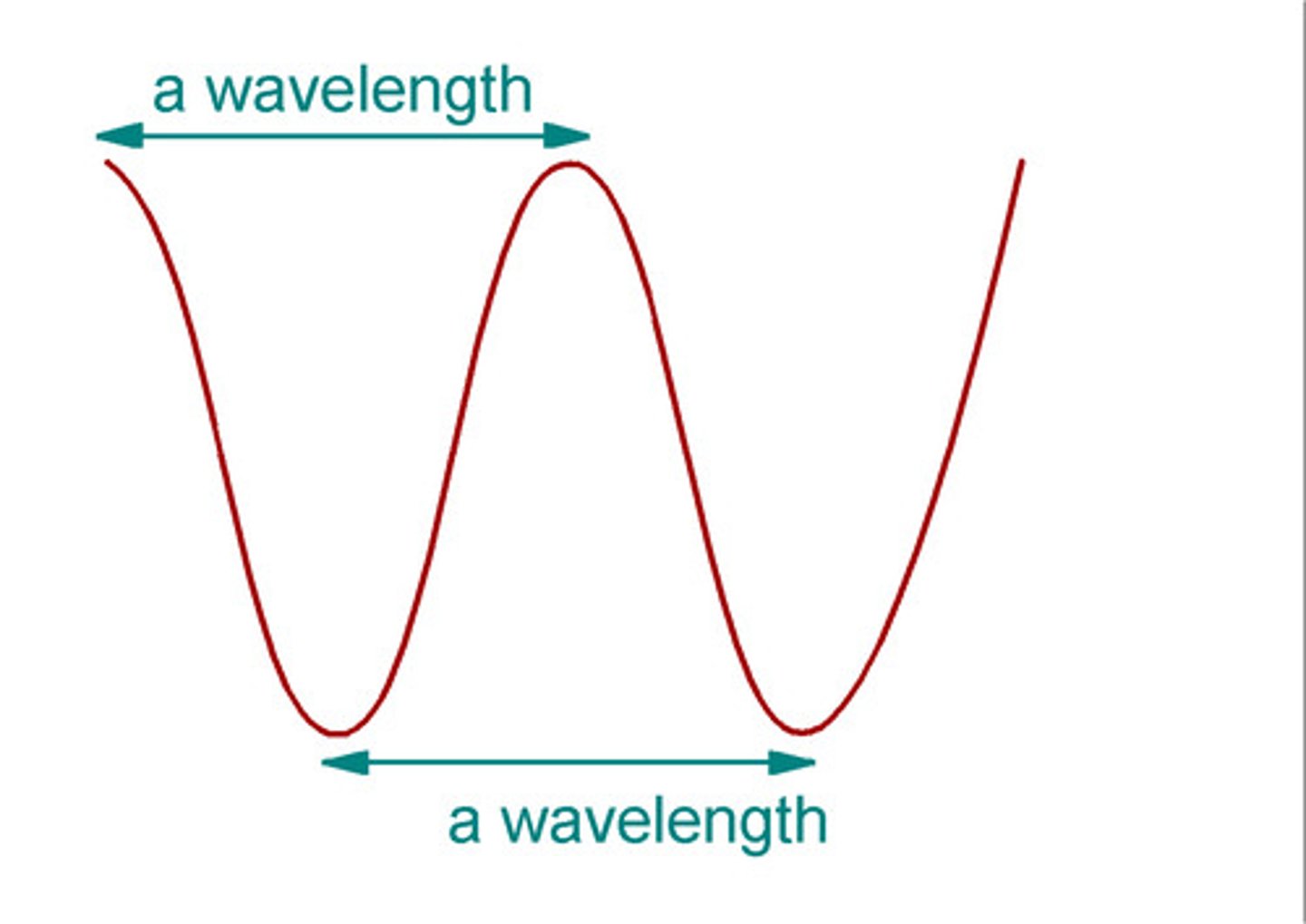
Amplitude
Influences brightness. Height of light waves
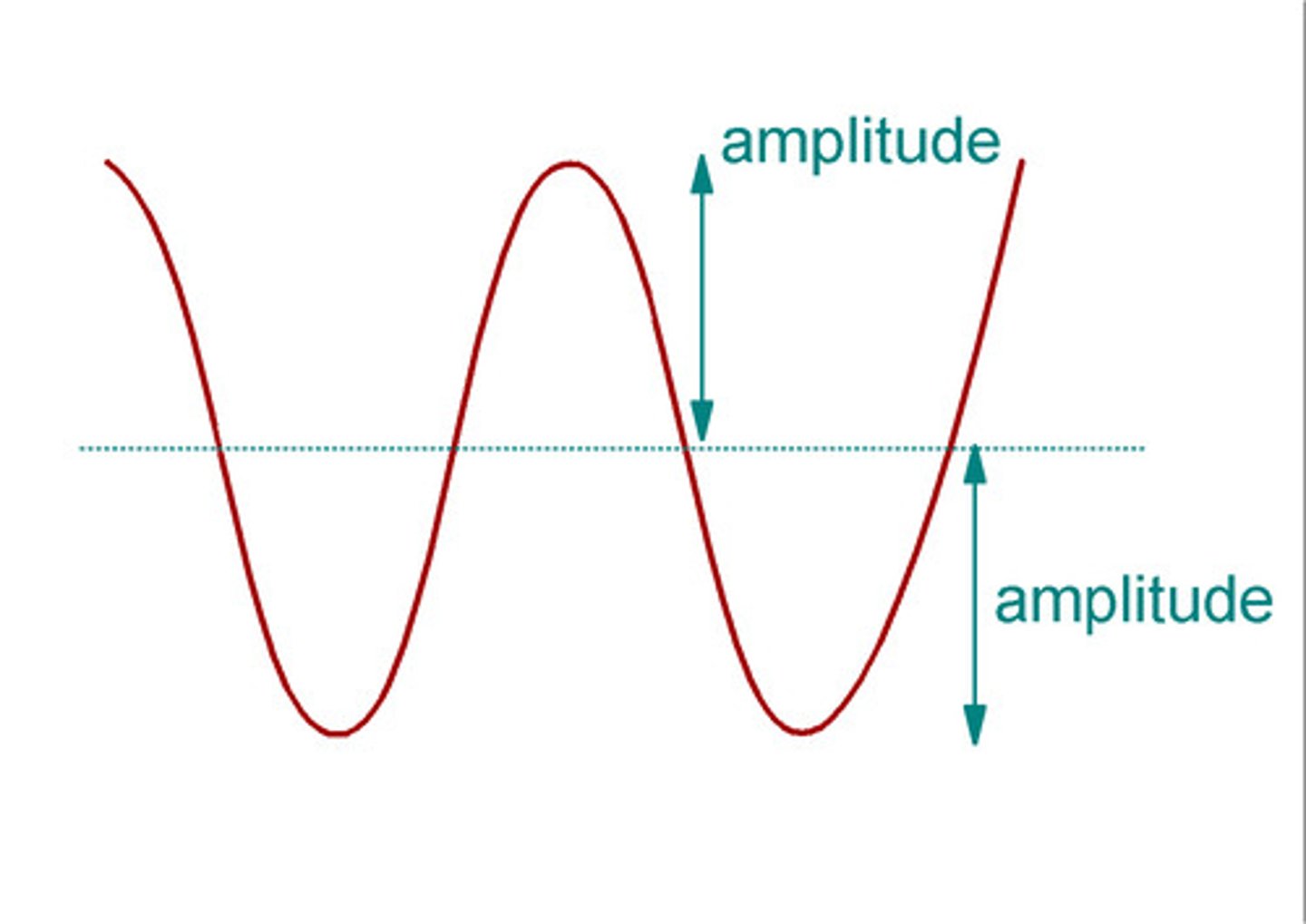
Purity
Affects saturation.
Transduction
The conversion of physical stimuli (e.g., light, sound waves) into neural signals by sensory receptors.
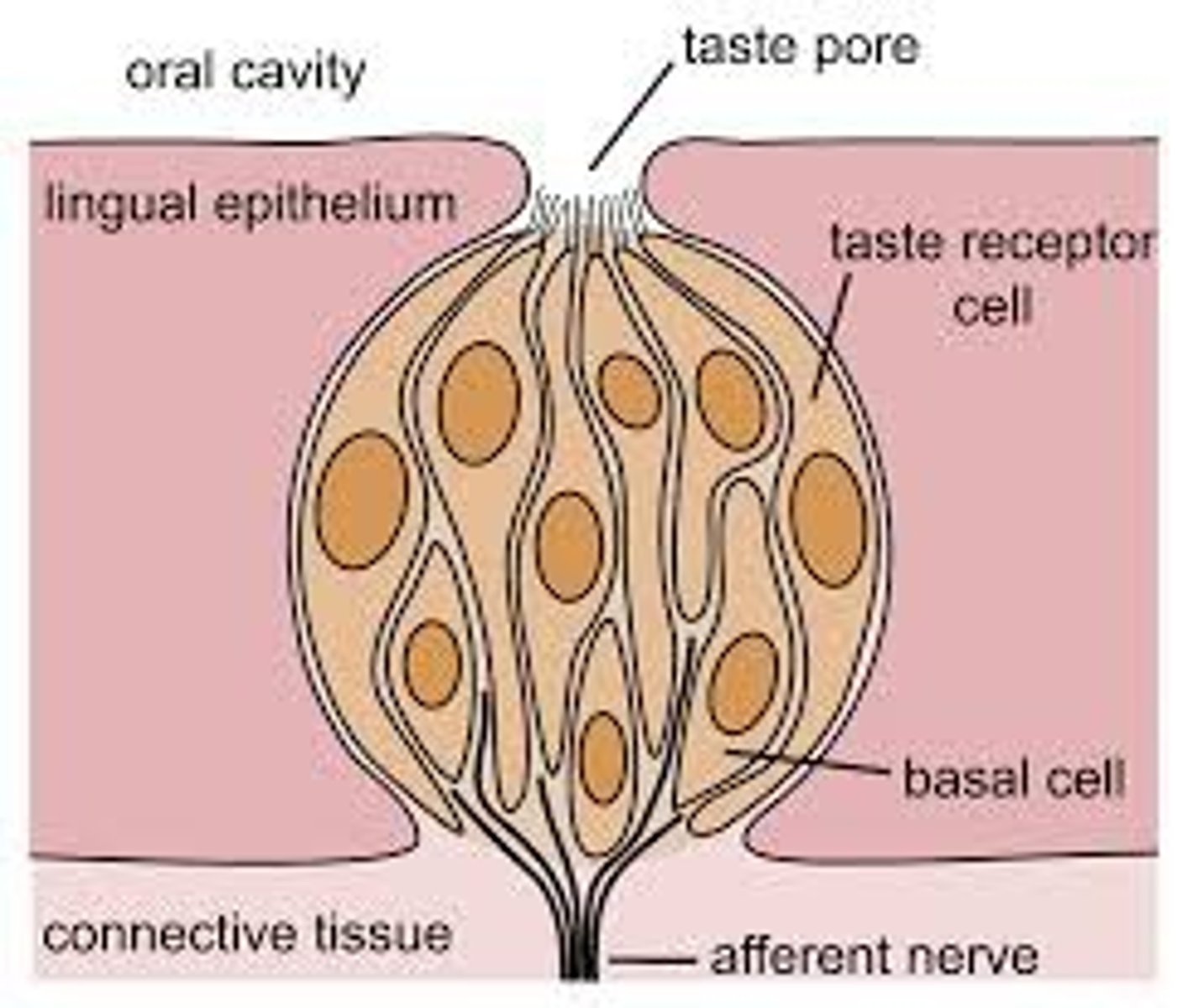
Cornea
Transparent layer that bends light to help focus.
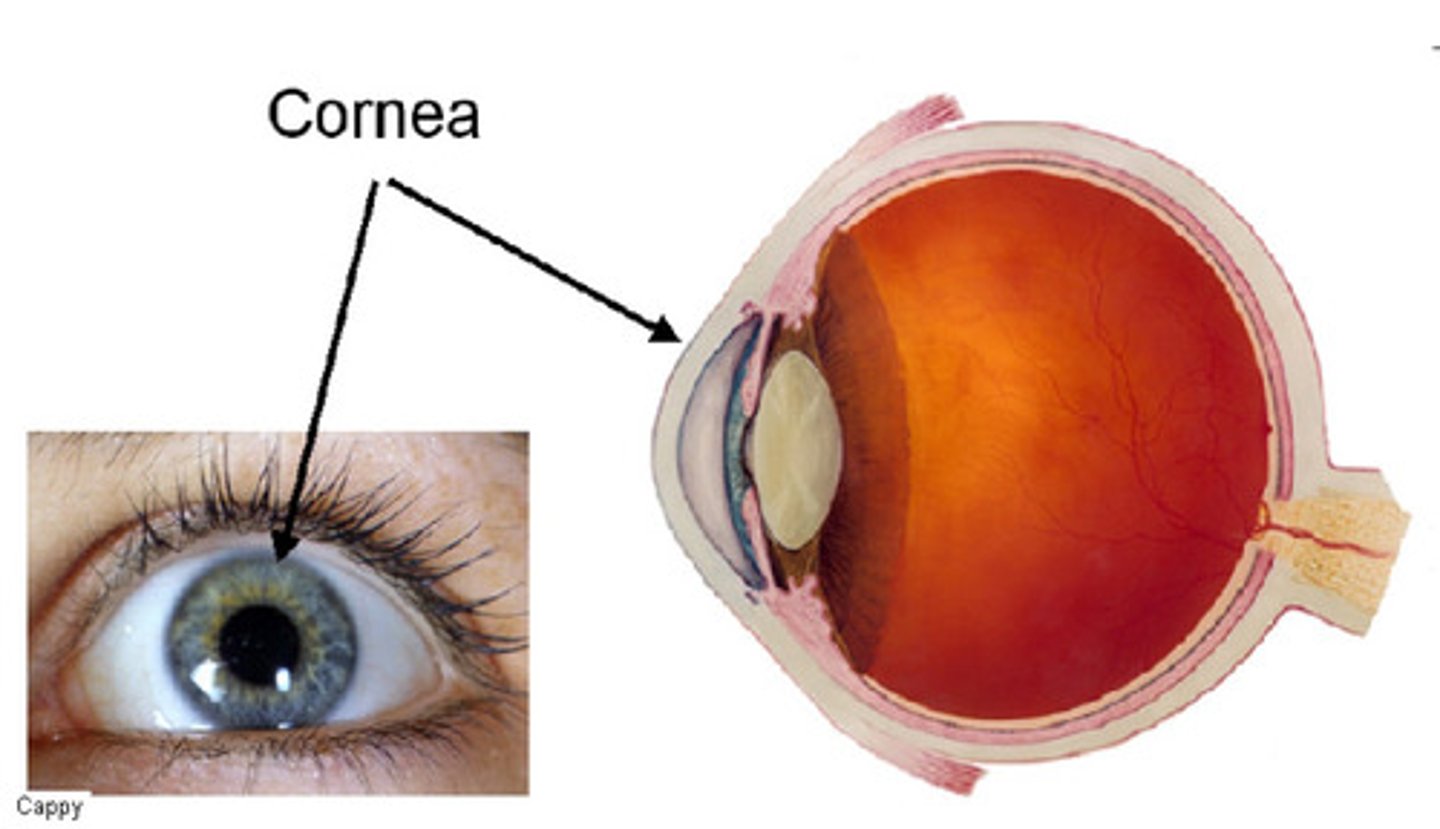
Pupil
Opening in the iris that controls light entry.
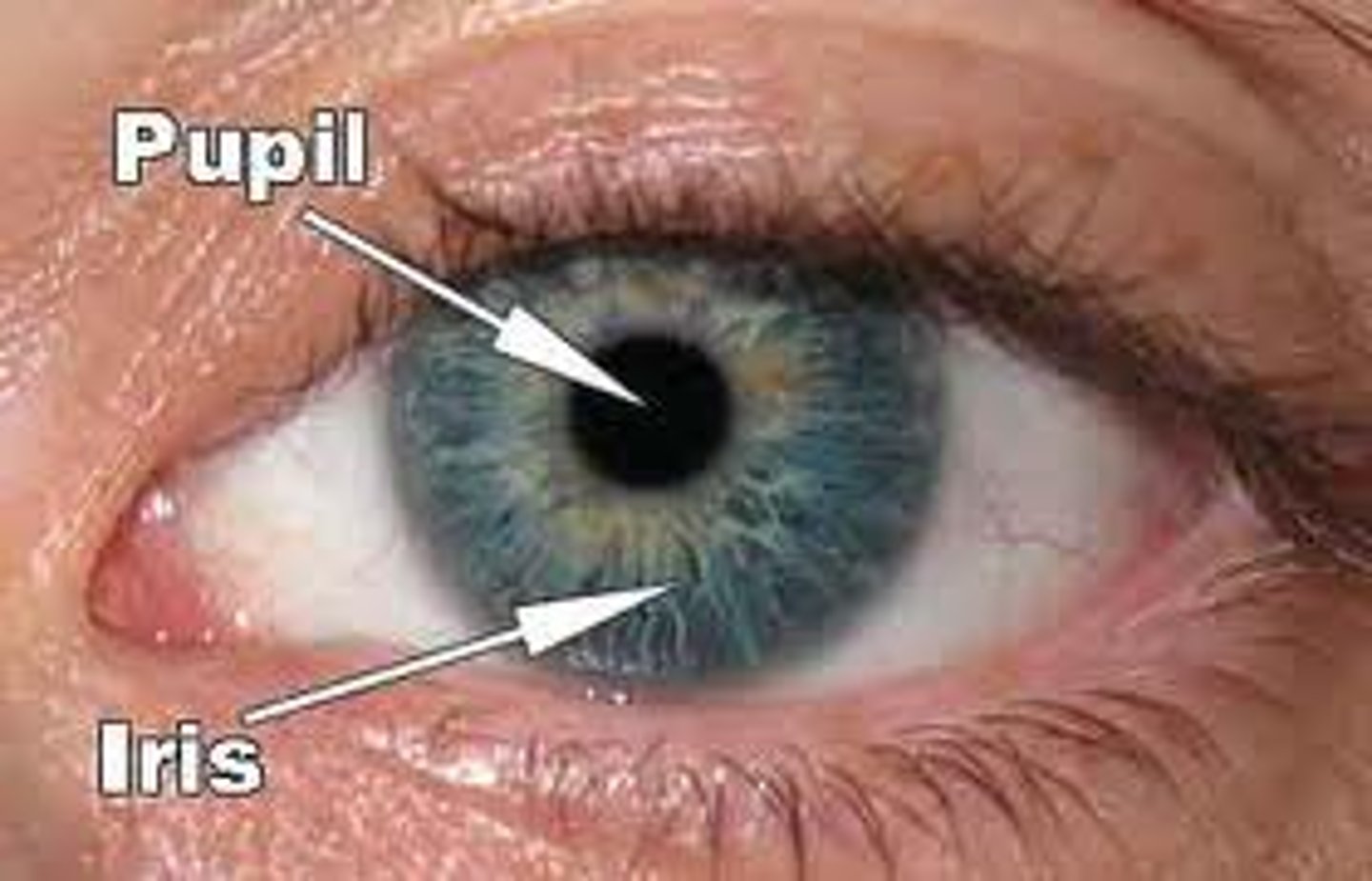
Iris
Colored part of the eye that regulates the size of the pupil.
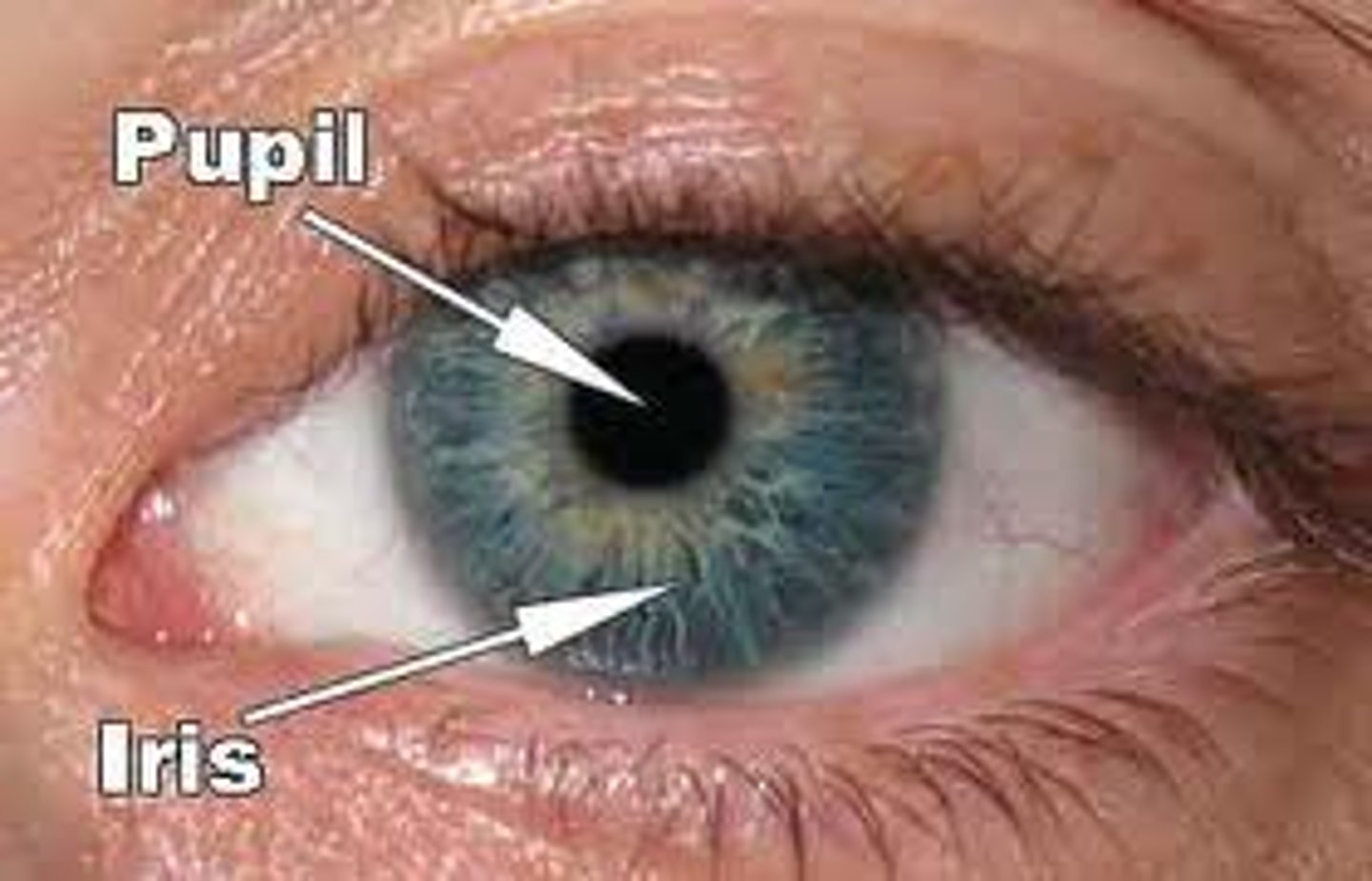
Lens
Adjusts shape to focus light on the retina.
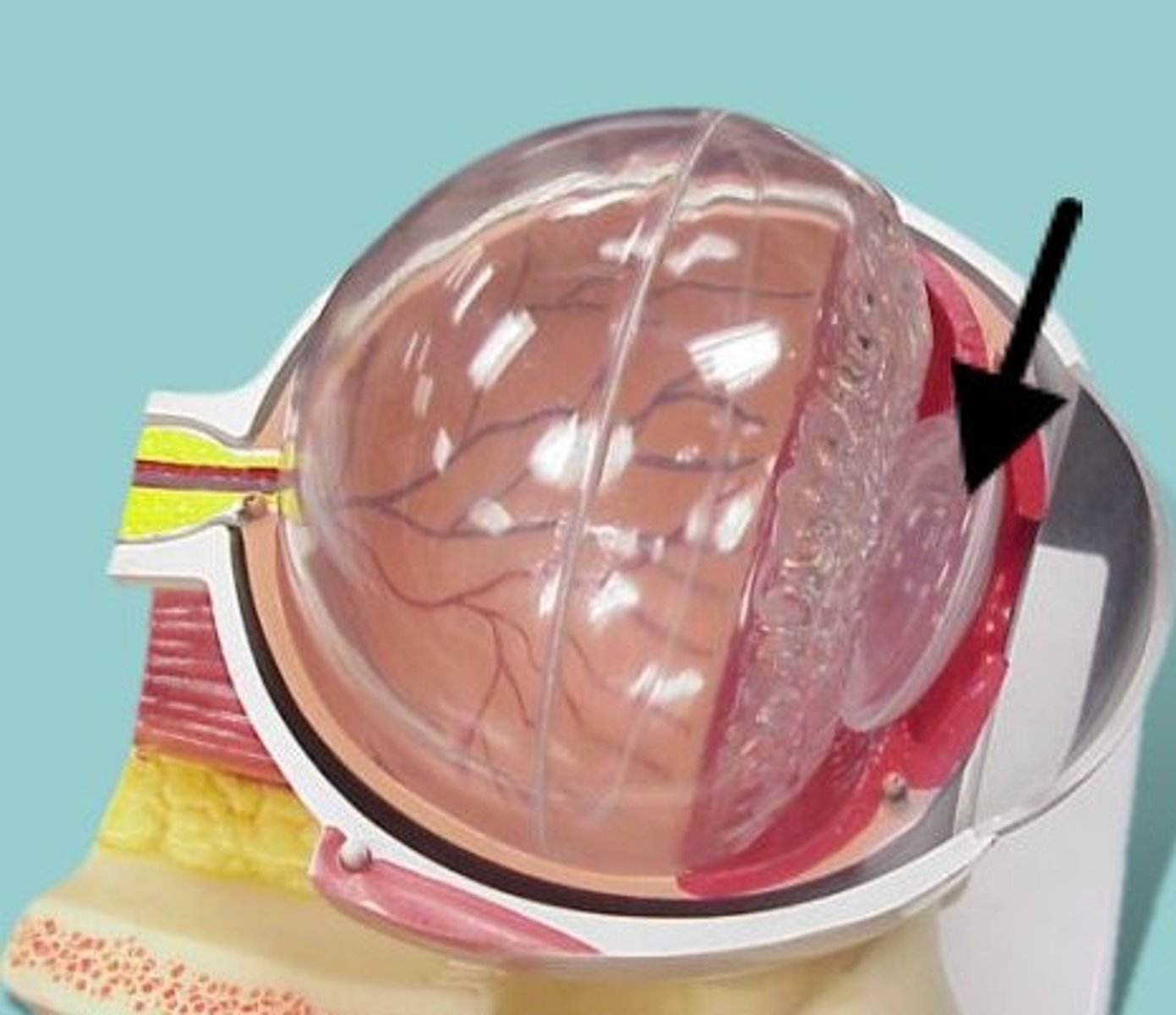
Retina
Light-sensitive layer containing rods and cones.
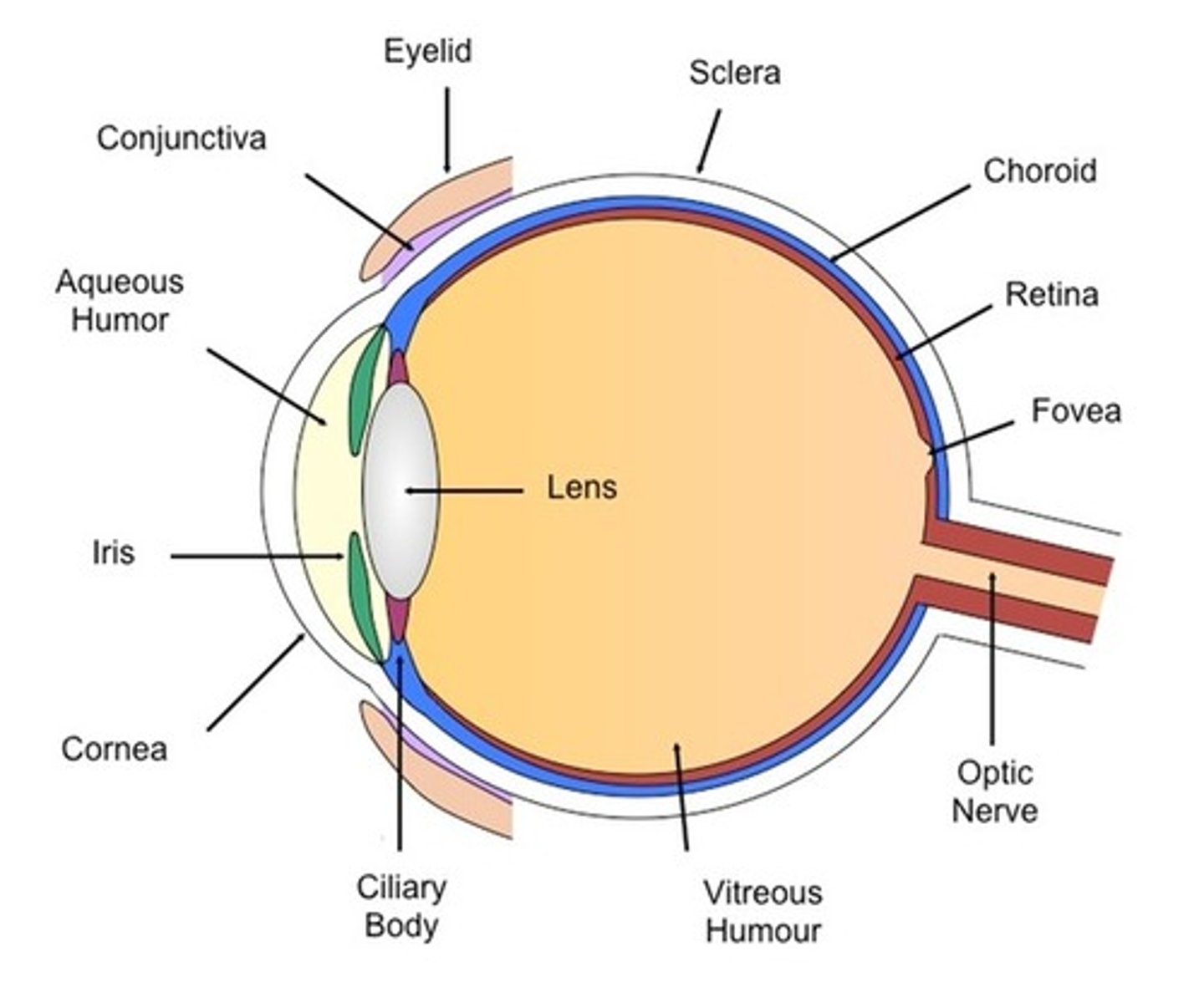
Fovea
Center of the retina with high cone density for sharp vision.
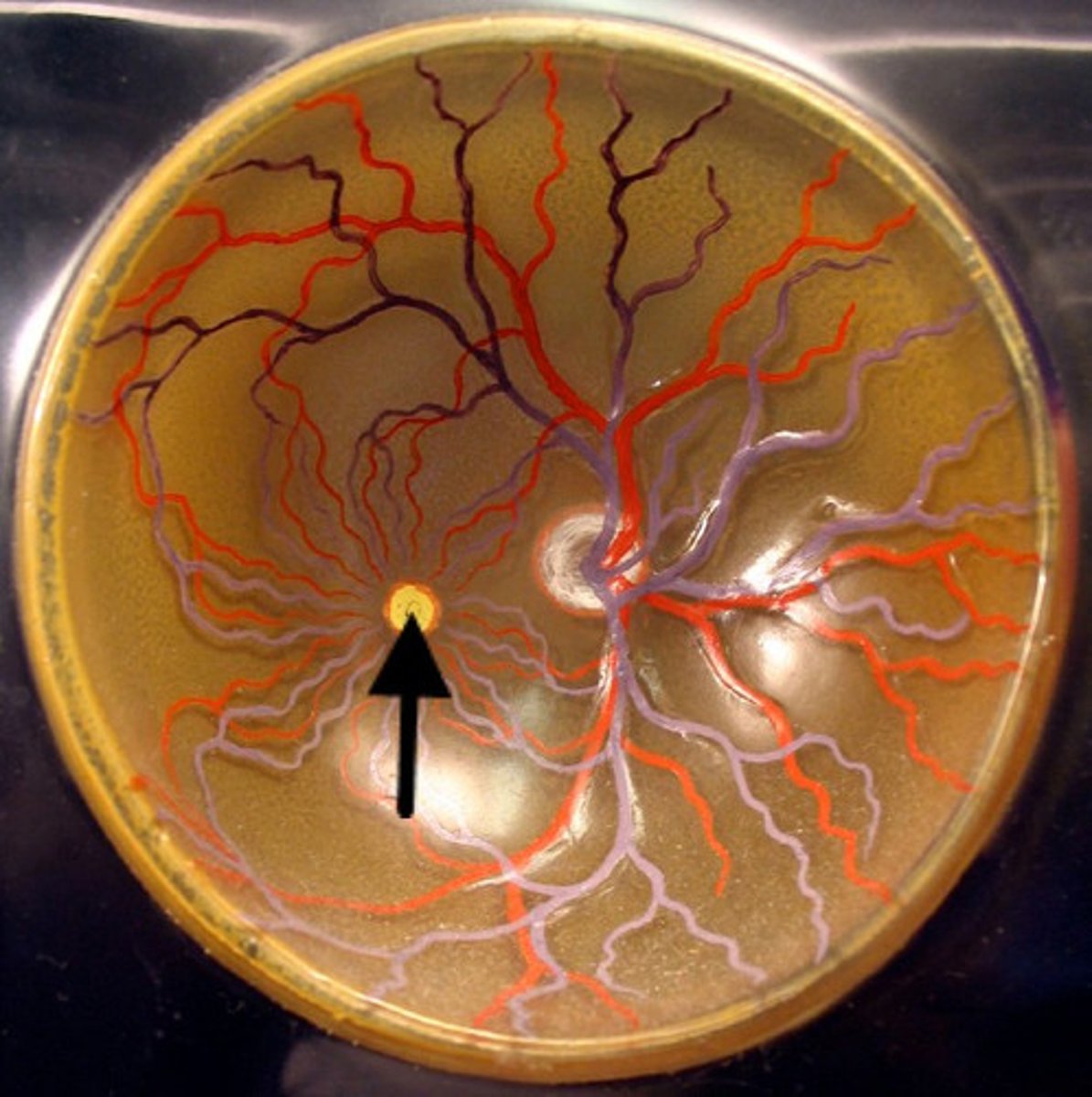
Optic nerve
Transmits visual information to the brain.
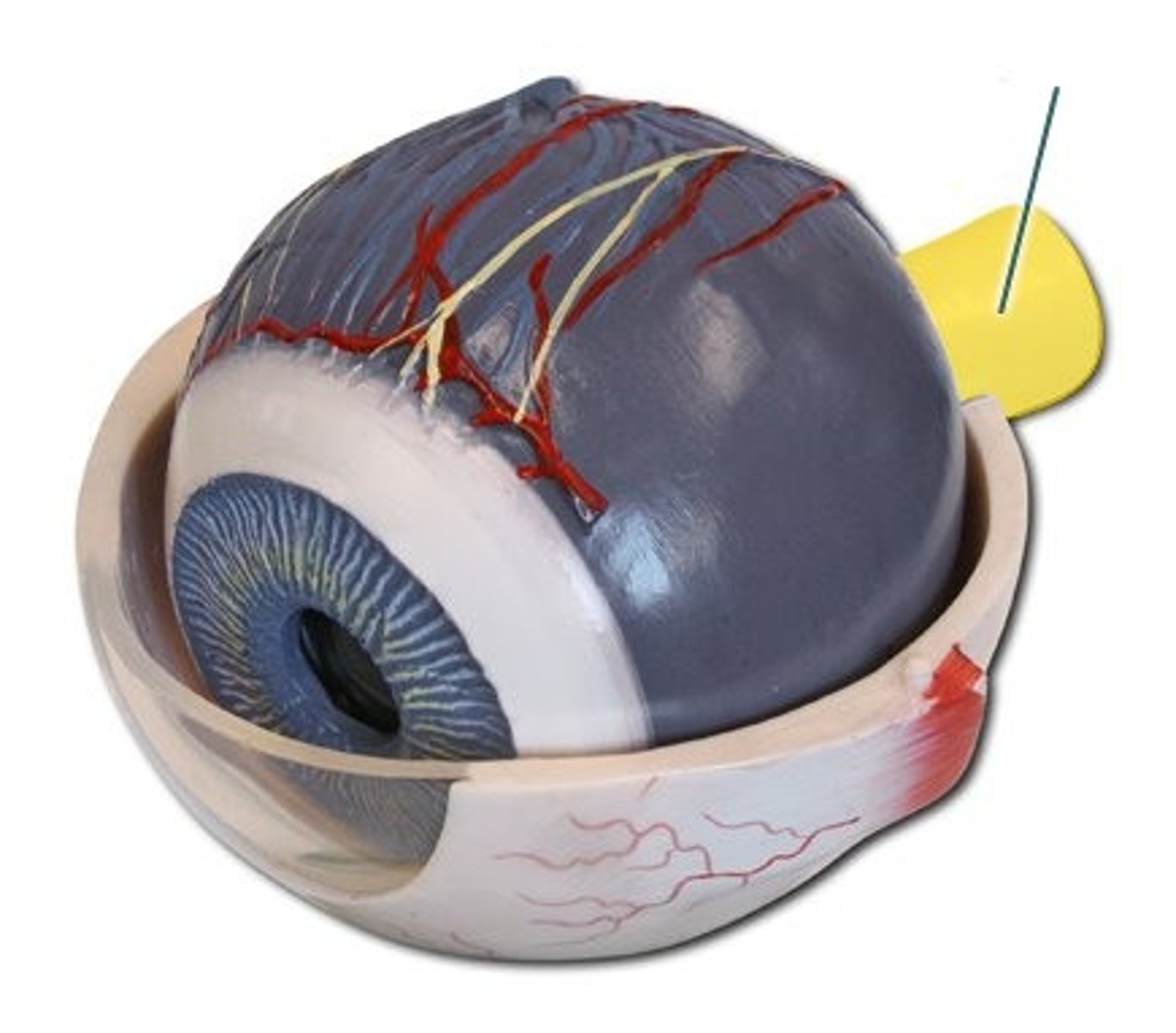
Optic disk (blind spot)
Area where the optic nerve exits; lacks photoreceptors.
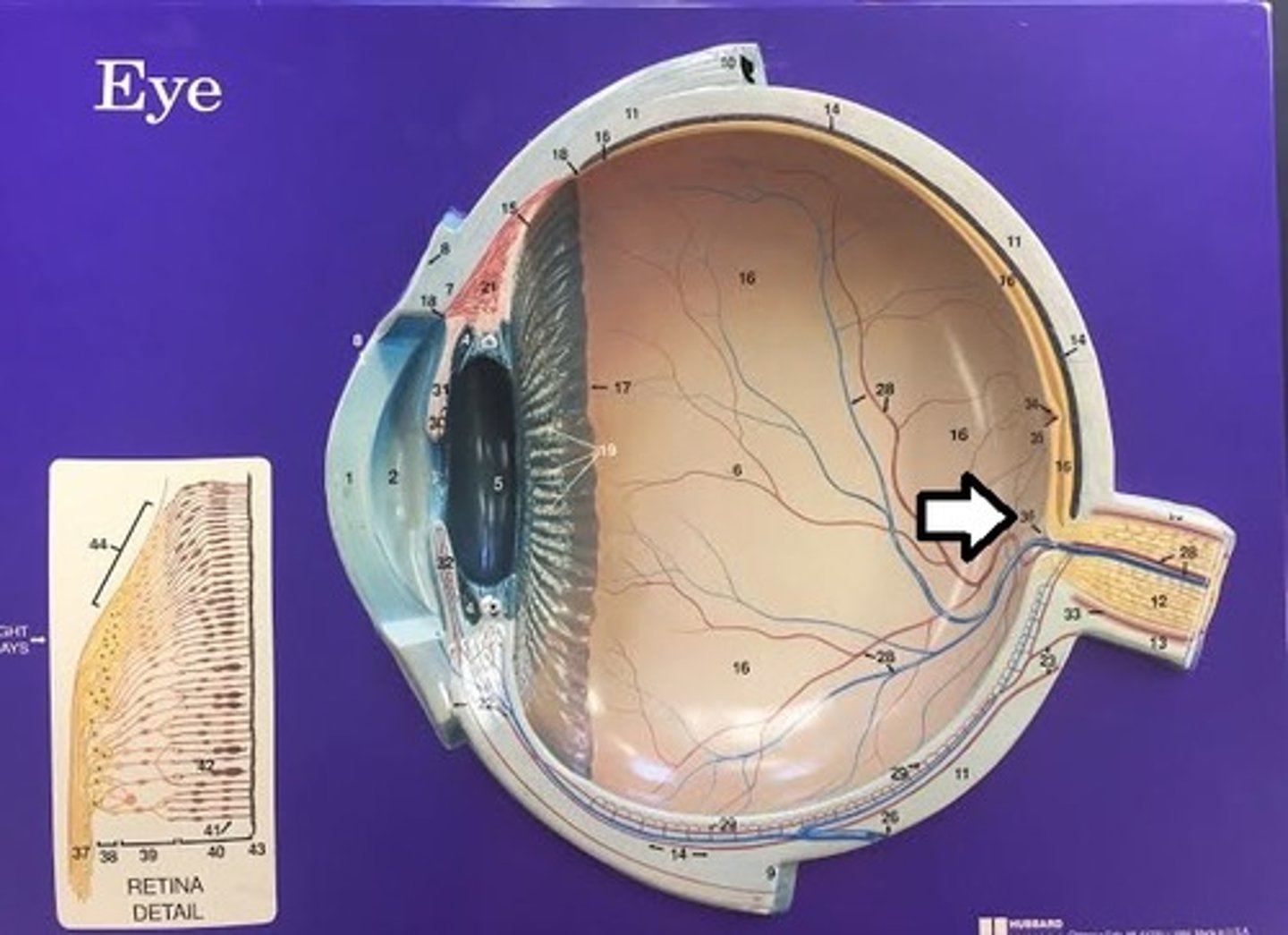
Lens accommodation
The lens changes shape to focus near or far objects on the retina.
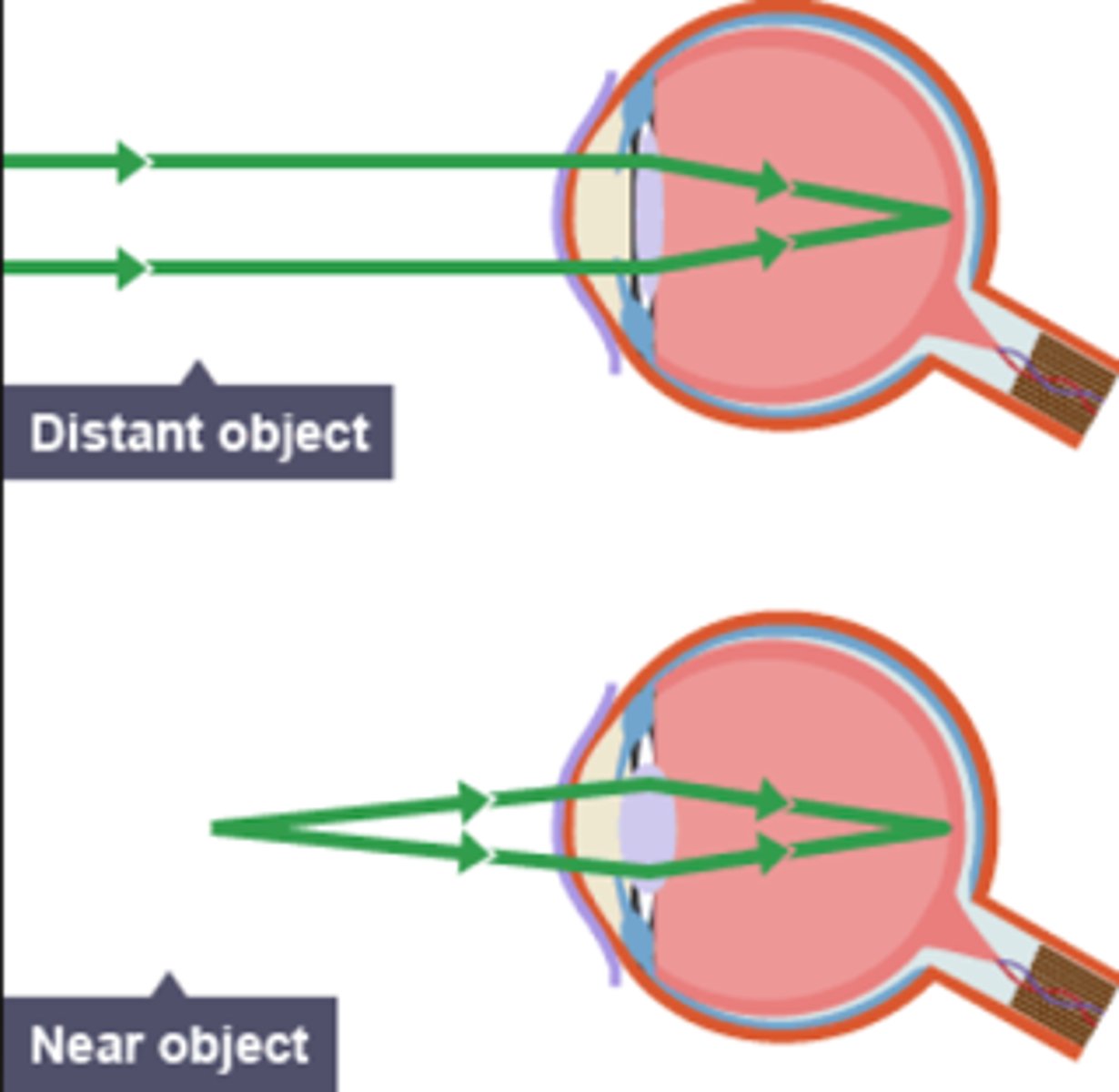
Nearsightedness
Close objects are clear; distant objects appear blurry.
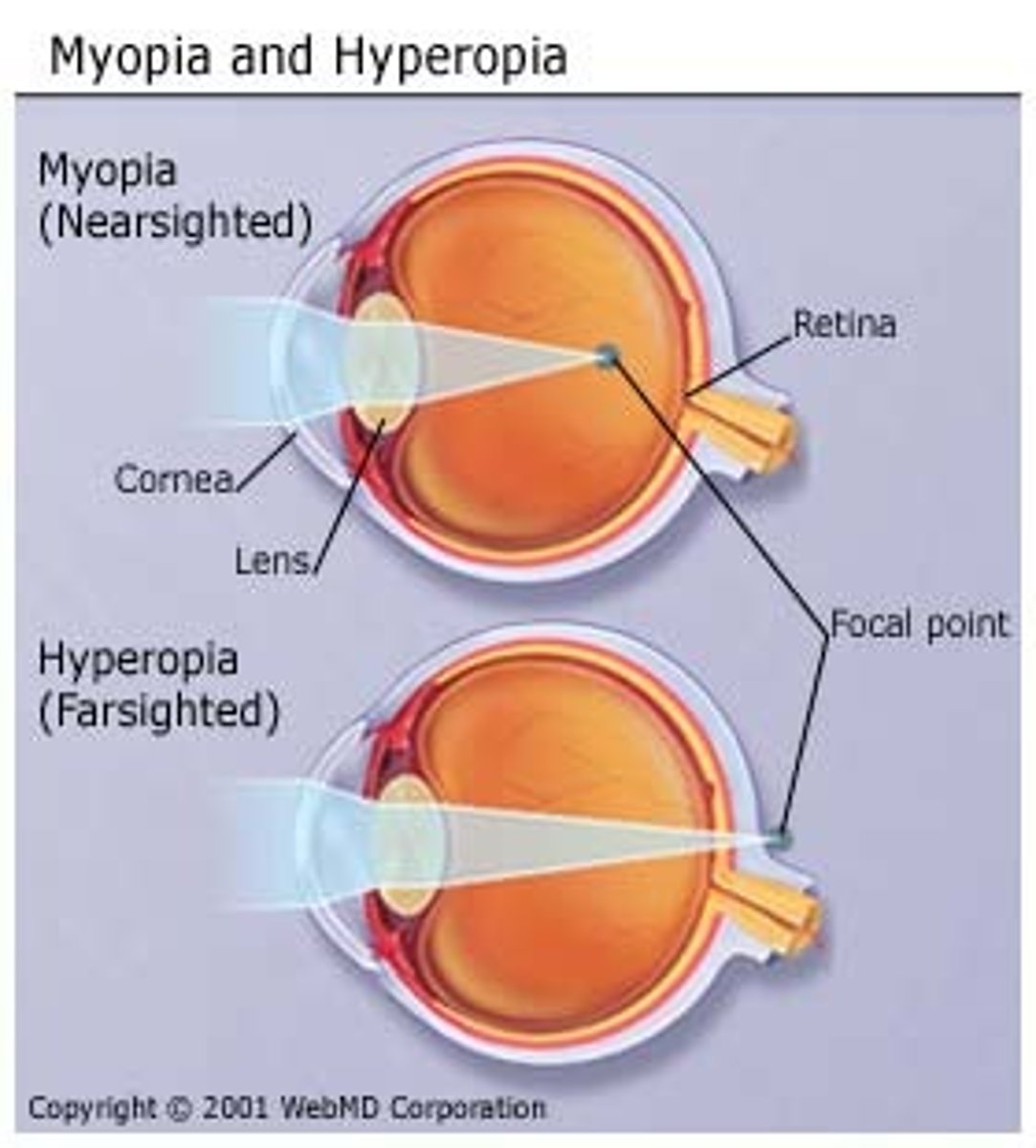
Farsightedness
Distant objects are clear; close objects appear blurry.
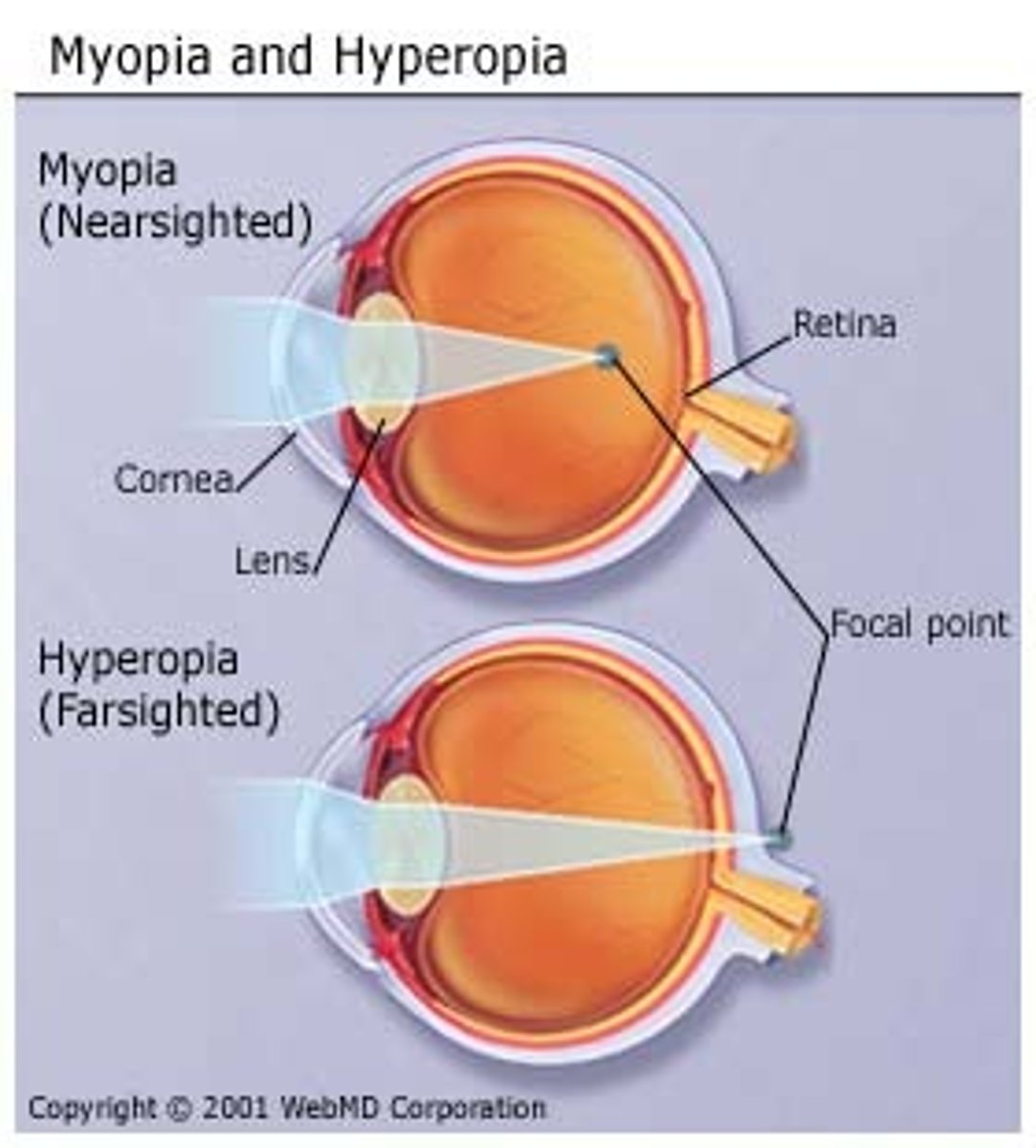
Rods
Detect black, white, and gray; important for night vision.
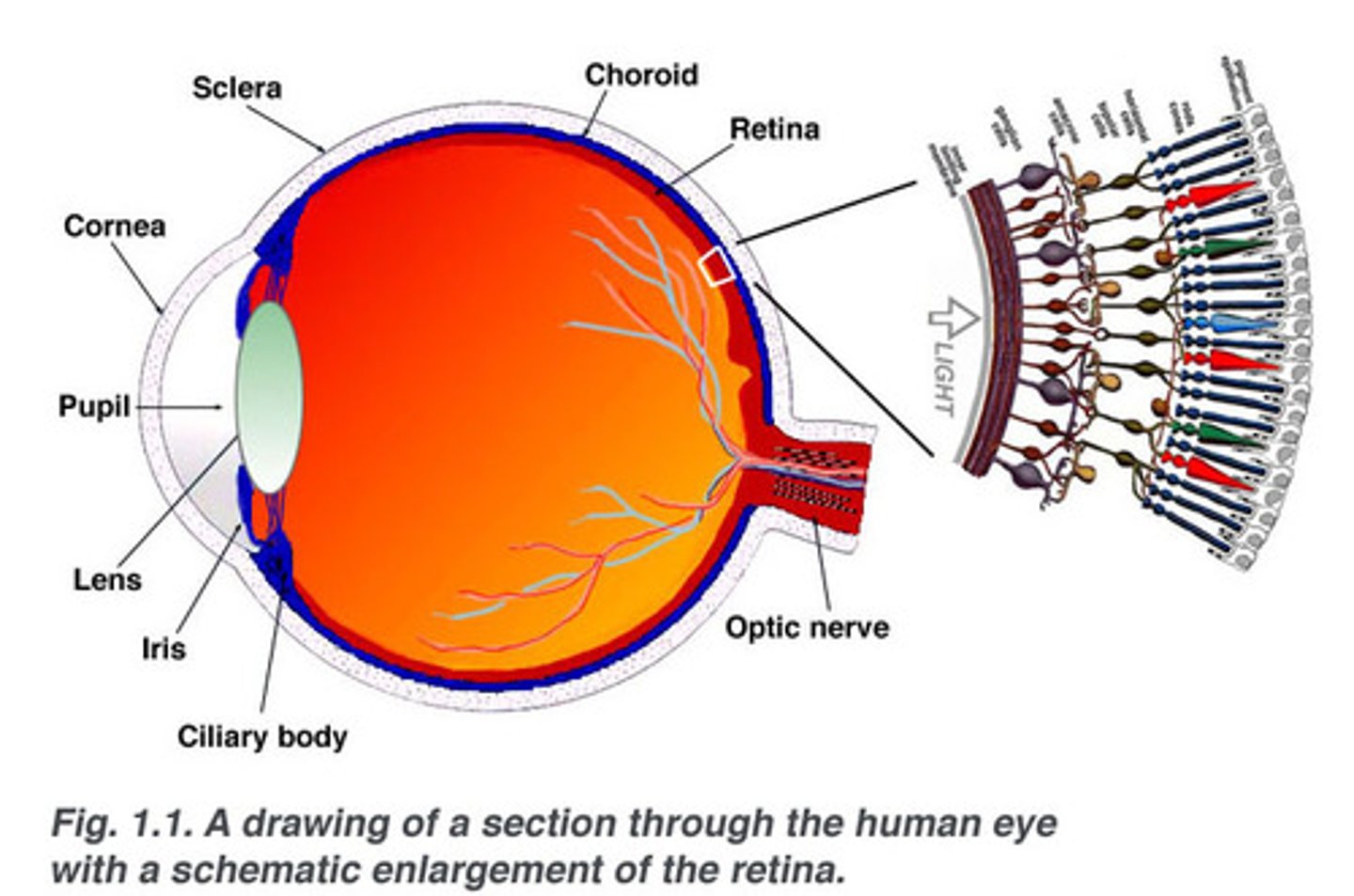
Cones
Detect color and fine detail; function in daylight.
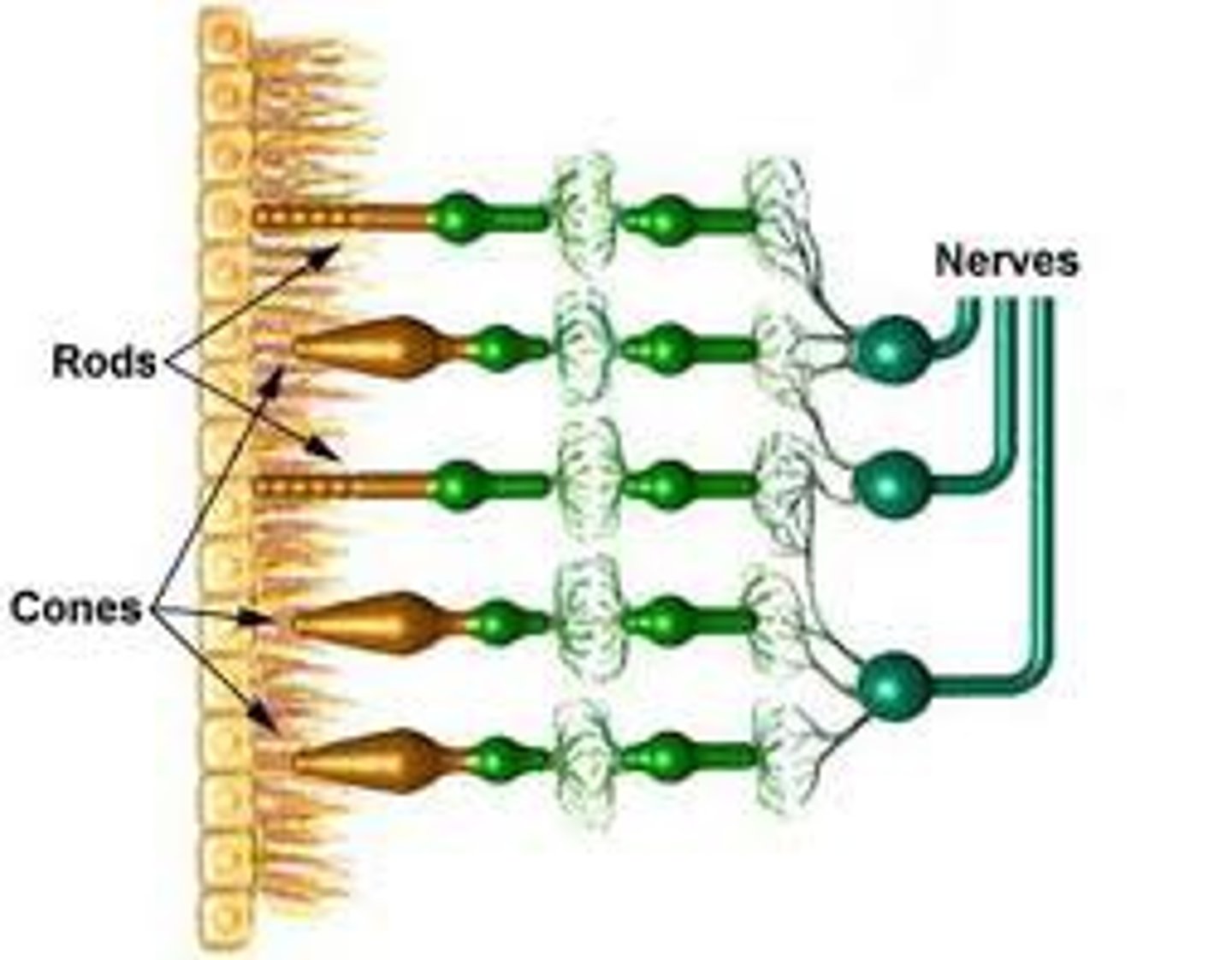
Ganglion cells
Neurons in the retina that transmit signals to the brain via the optic nerve.
Dark & light adaptation
Adjustment of the eyes to low (dark) or bright (light) lighting conditions.
Trichromatic theory of color
Proposes that the retina contains three color receptors (red, green, blue).
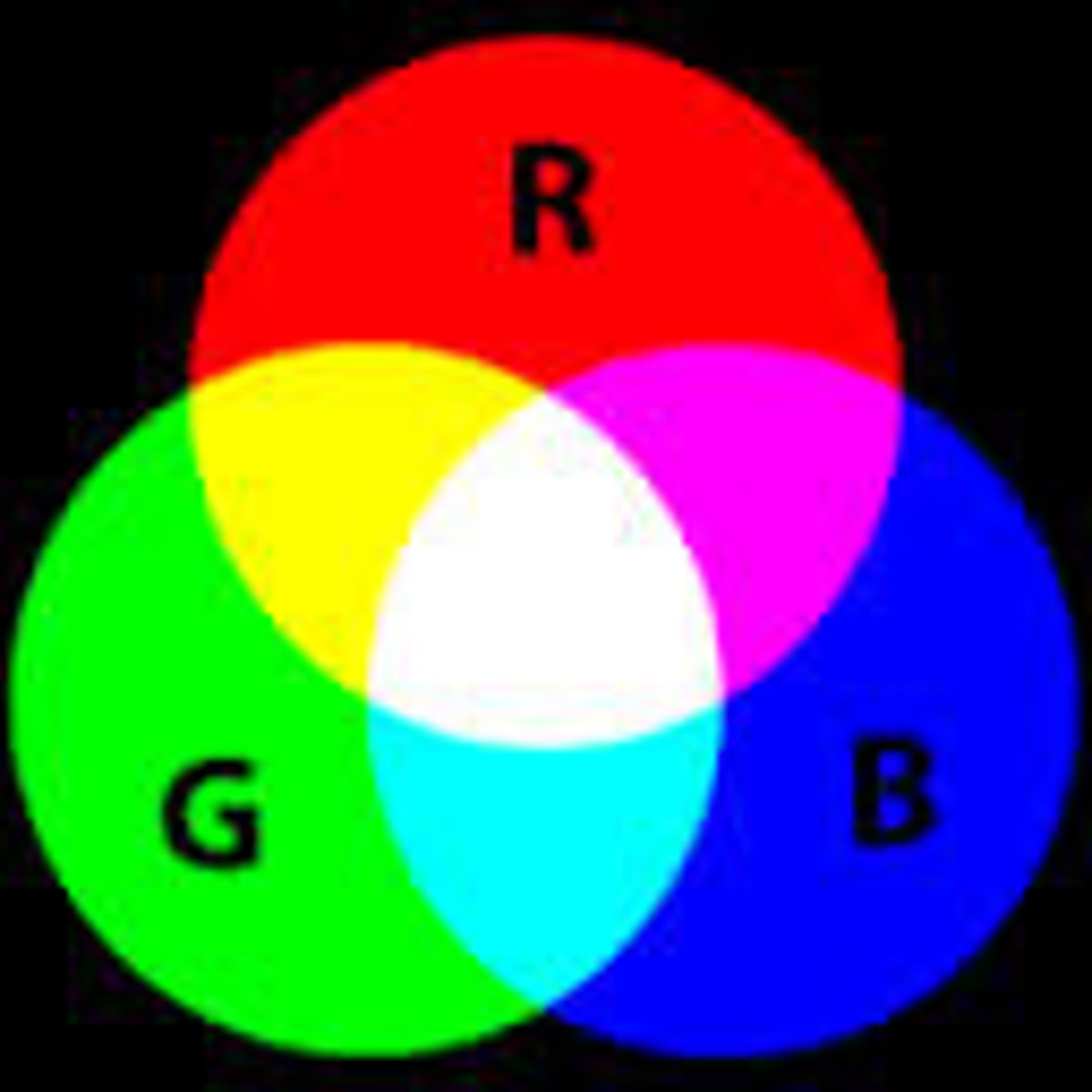
Dichromatism
Partial color blindness (two functioning cones).
Monochromatism
Total color blindness (one or no functioning cones).
Opponent processing theory
Visual system processes colors in opposing pairs (e.g., red-green, blue-yellow).
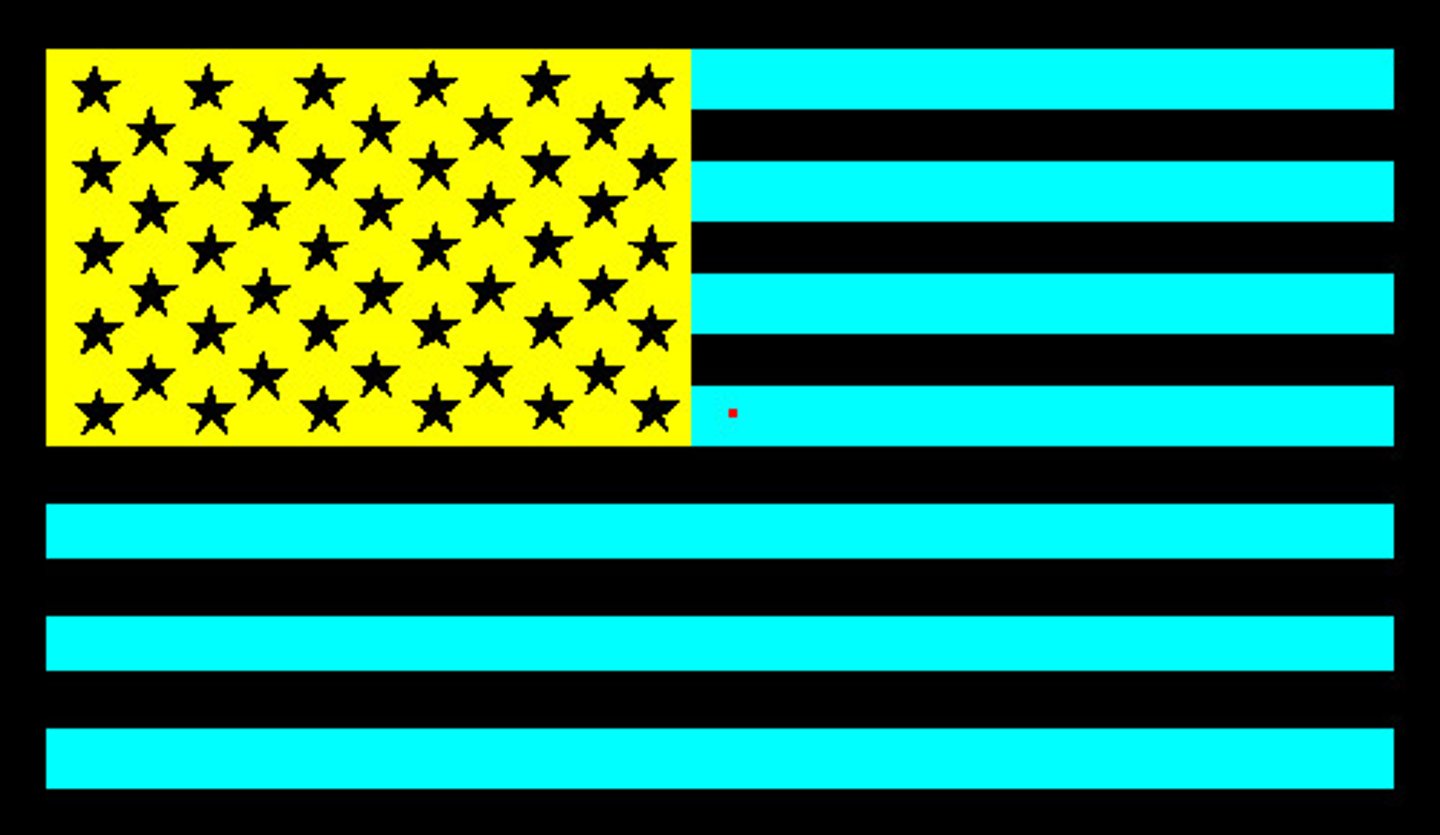
perceptual set
a mental predisposition to perceive one thing and not another
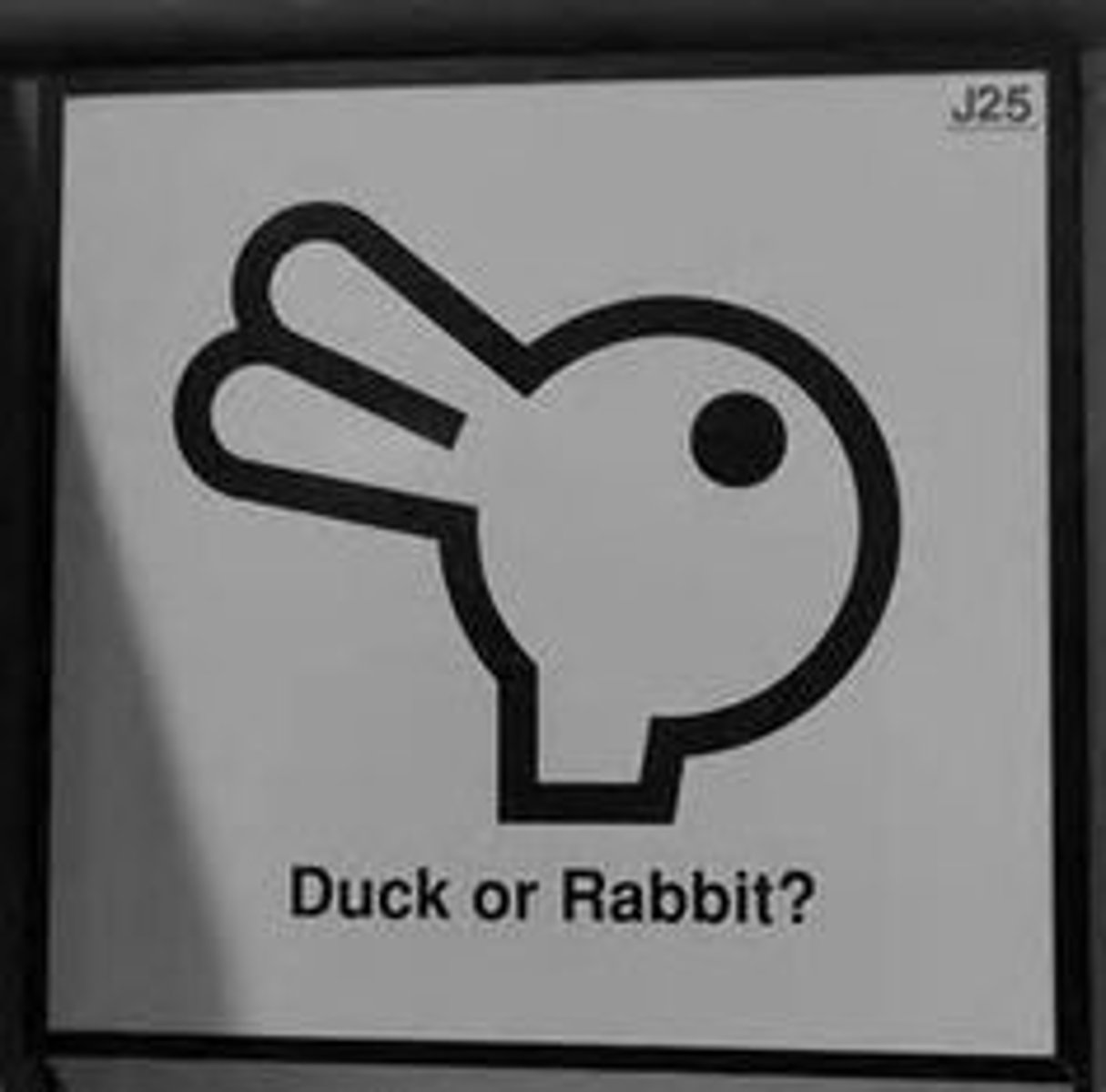
Feature analysis
the process of detecting specific elements in visual input and assembling them into a more complex form

Top-down processing
Using prior knowledge and expectations to interpret sensory information. (What do you see in the picture? Some said man based on previous pictures shown; some said rat).
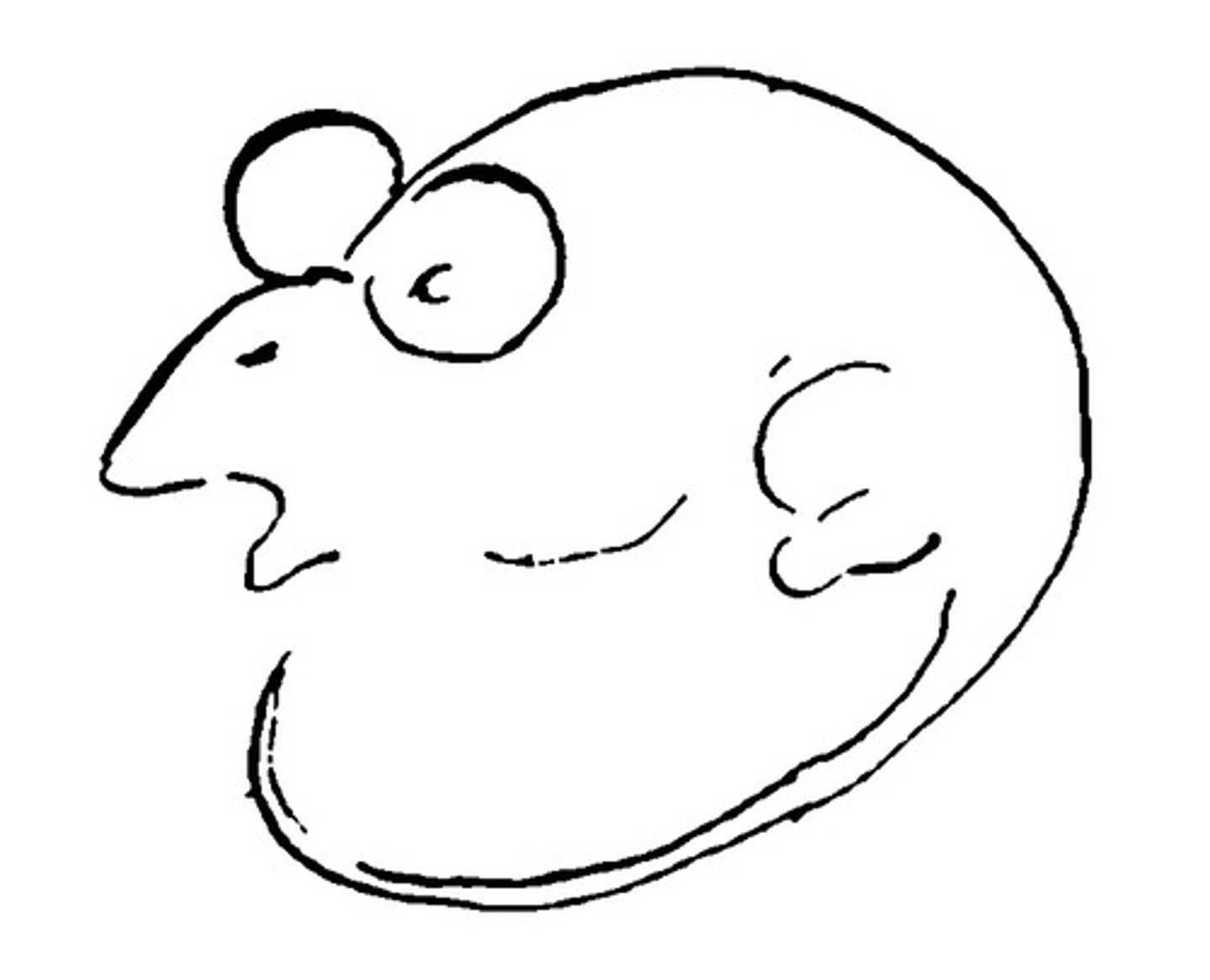
Bottom-up processing
Building perception from sensory input without prior knowledge.
Apparent motion (Phi phenomenon)
an optical illusion where a series of still images shown in rapid succession appear to be moving, creating the perception of continuous motion even though no actual movement is present
Figure-ground
Gestalt Principle. Differentiating an object from its background.
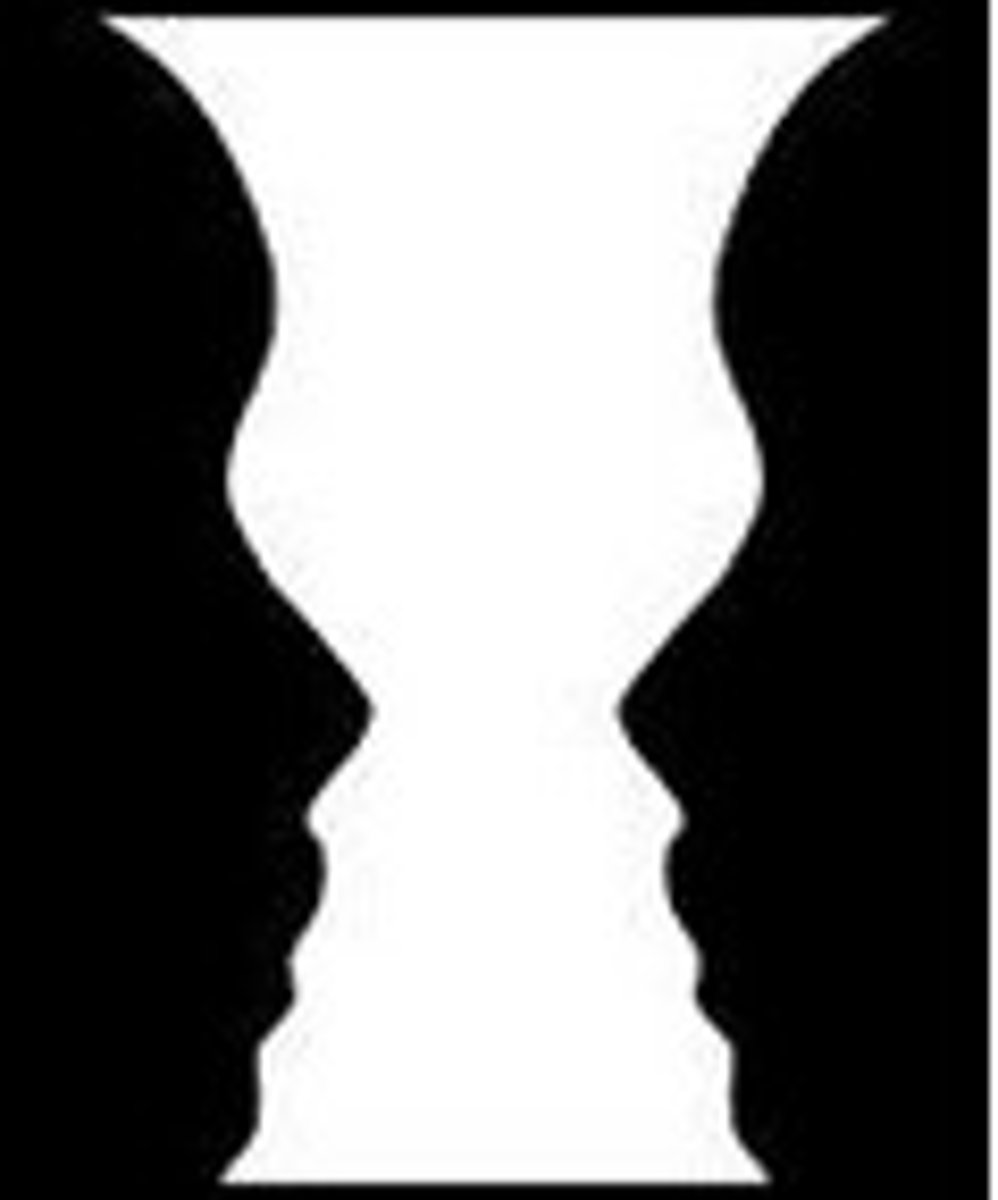
Proximity
Gestalt Principle. Grouping nearby objects together.
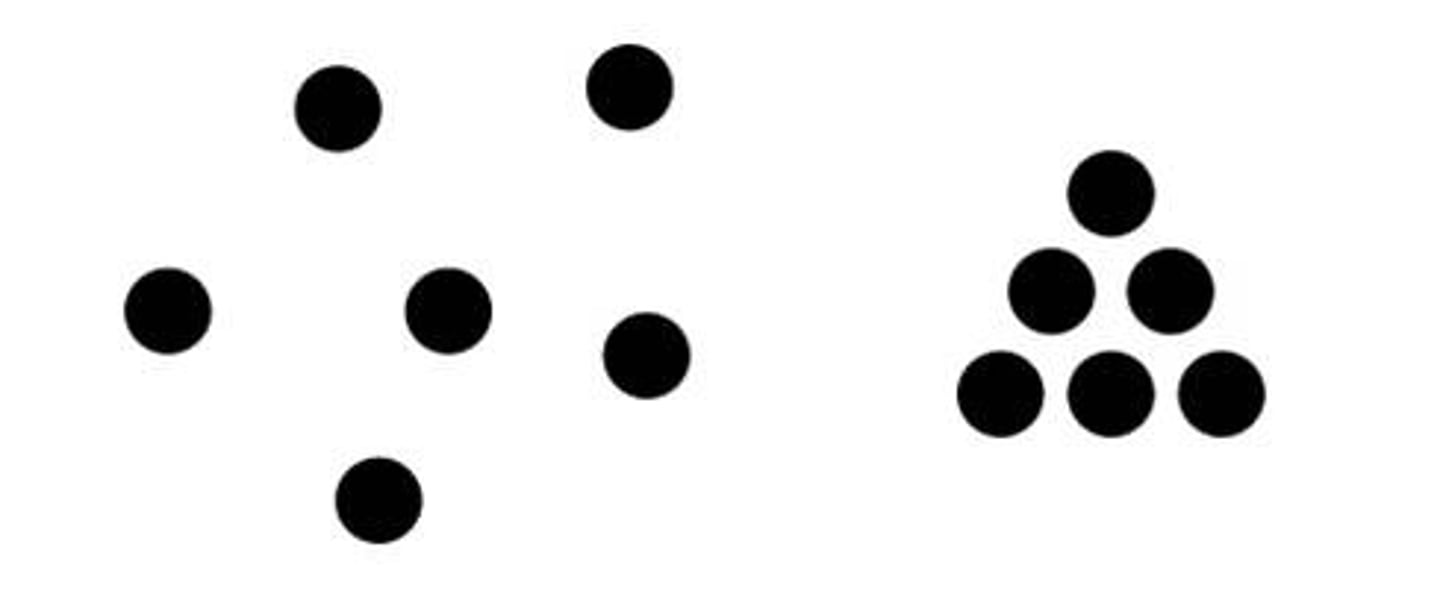
Closure
Gestalt Principle. Filling in gaps to perceive a whole object.
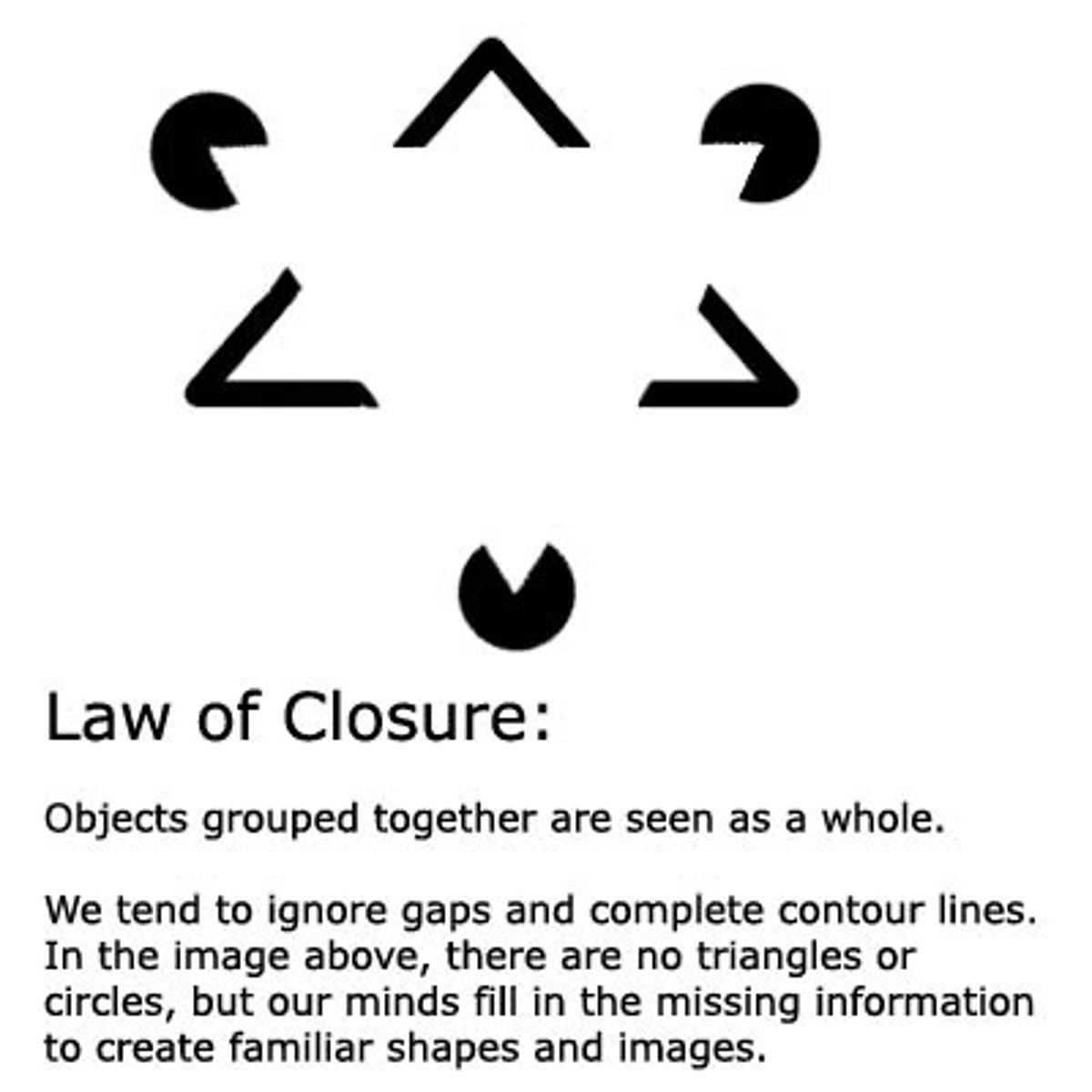
Similarity
Gestalt Principle. Grouping similar items together.
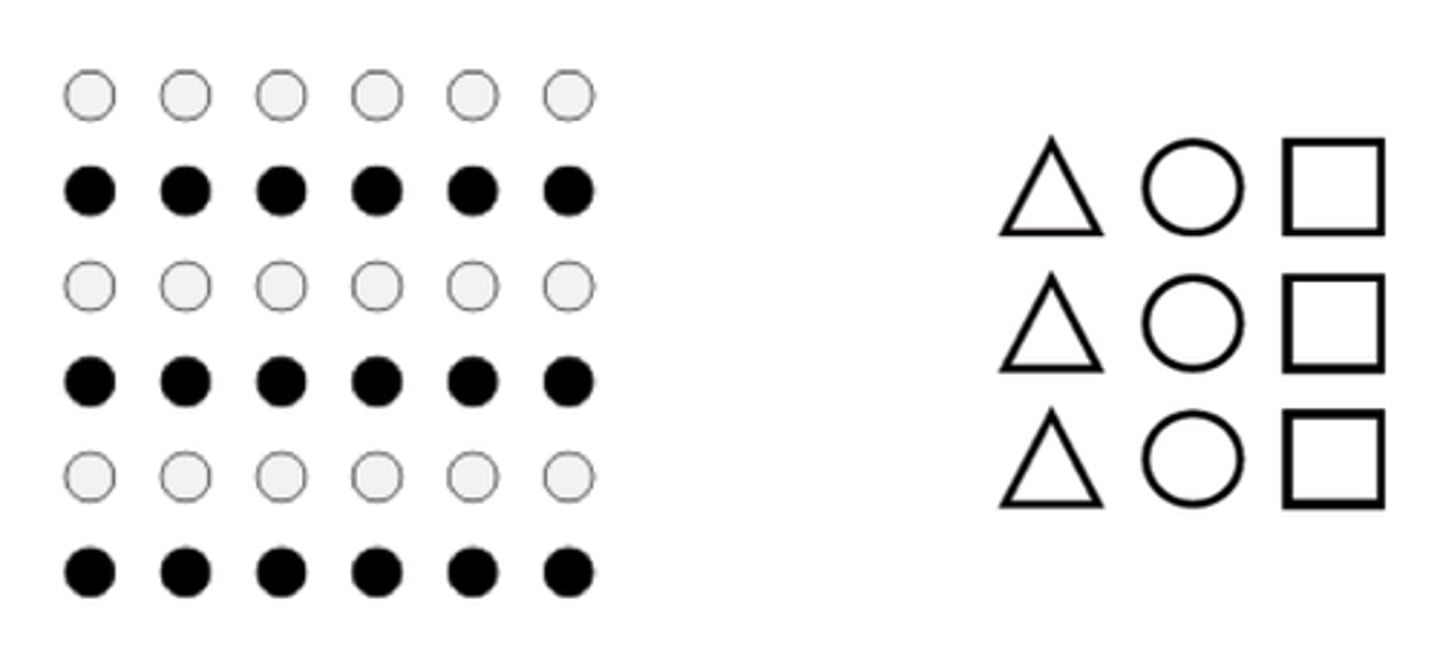
Simplicity
Gestalt Principle. Perceiving the simplest form of a stimulus. (We perceive the top image rather than the bottom one)
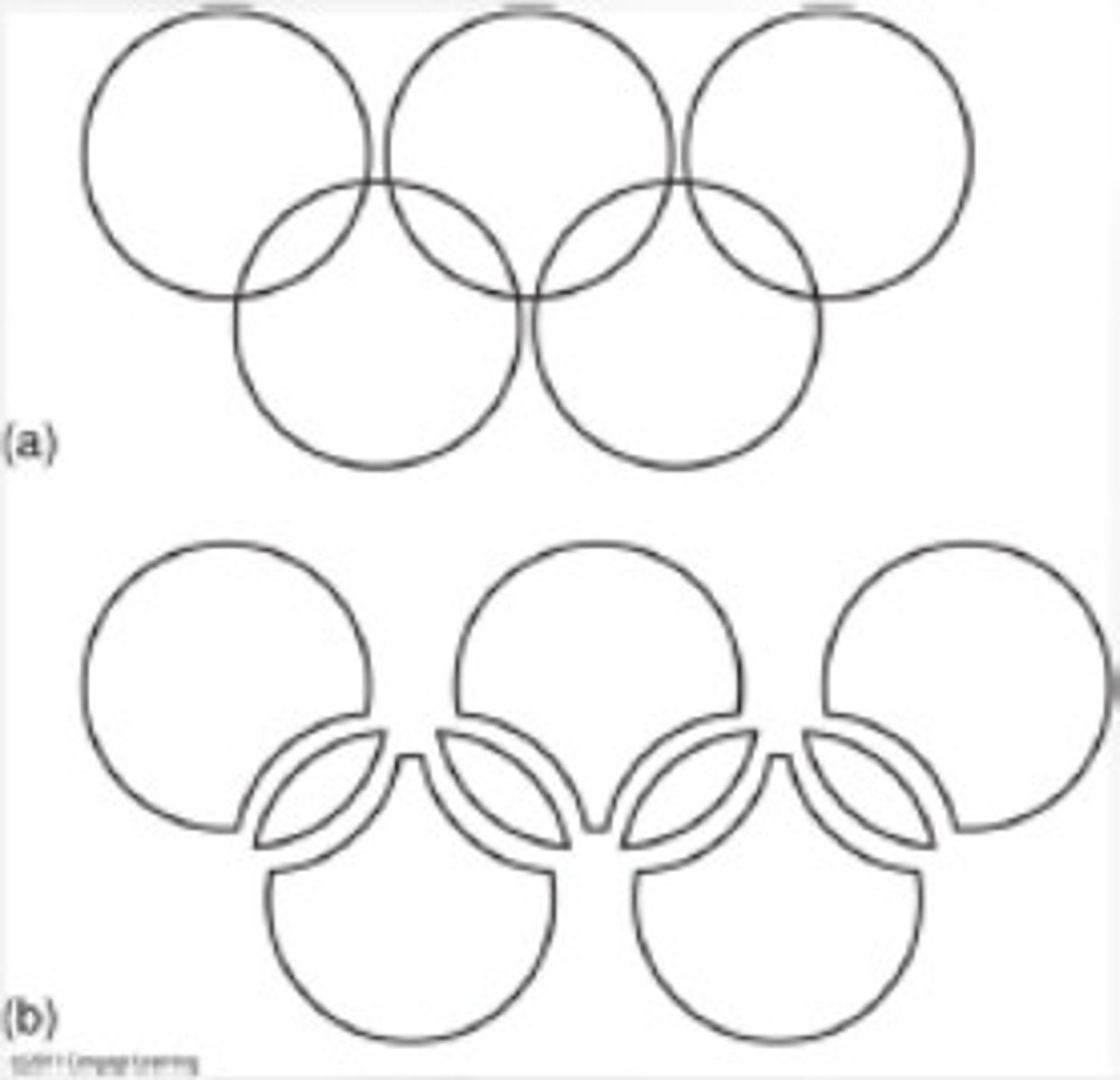
Continuity
Gestalt Principle. Seeing continuous patterns.
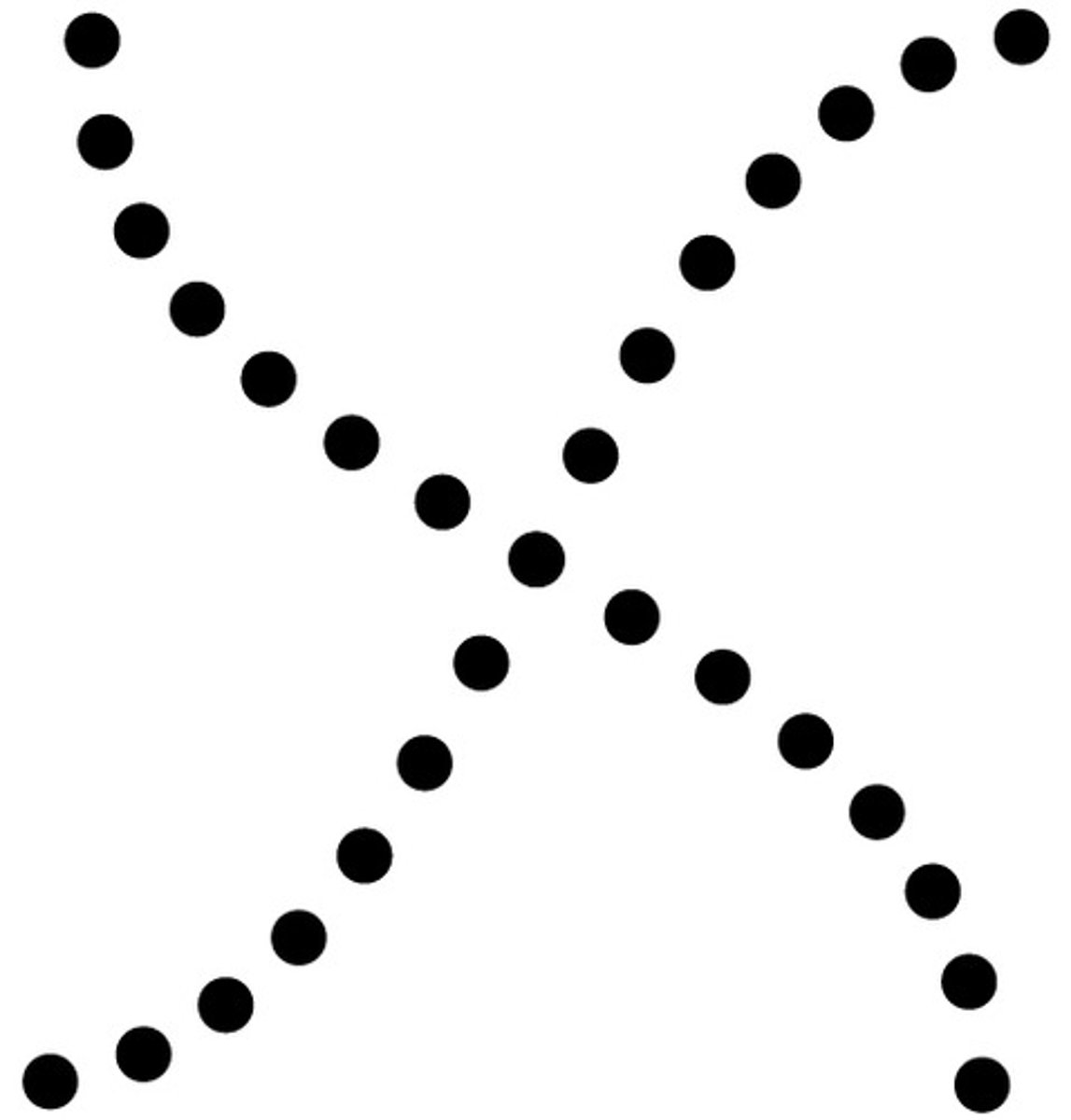
Depth perception
The ability to judge the distance of objects.
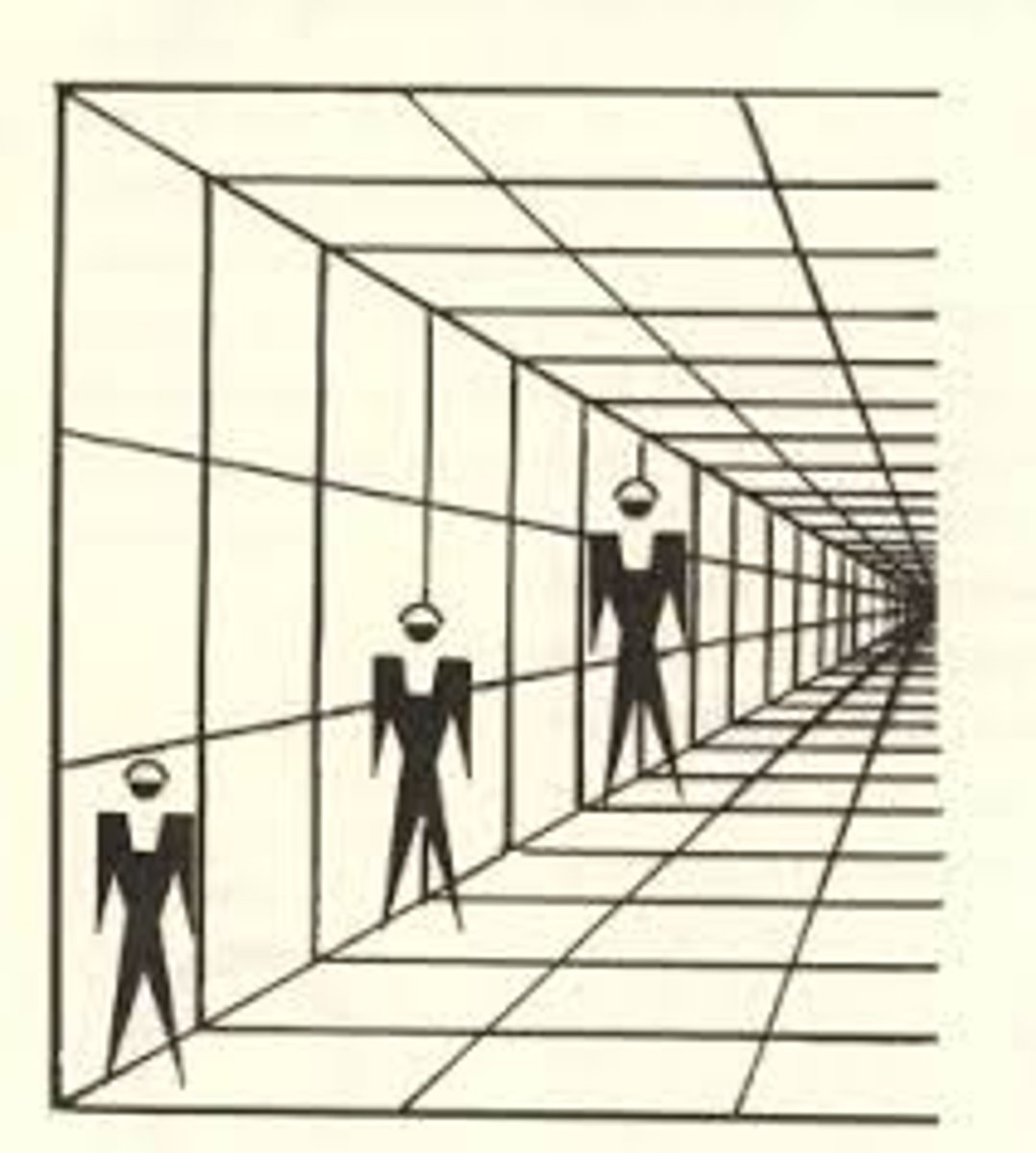
Retinal disparity
Slight differences in images between the two eyes.
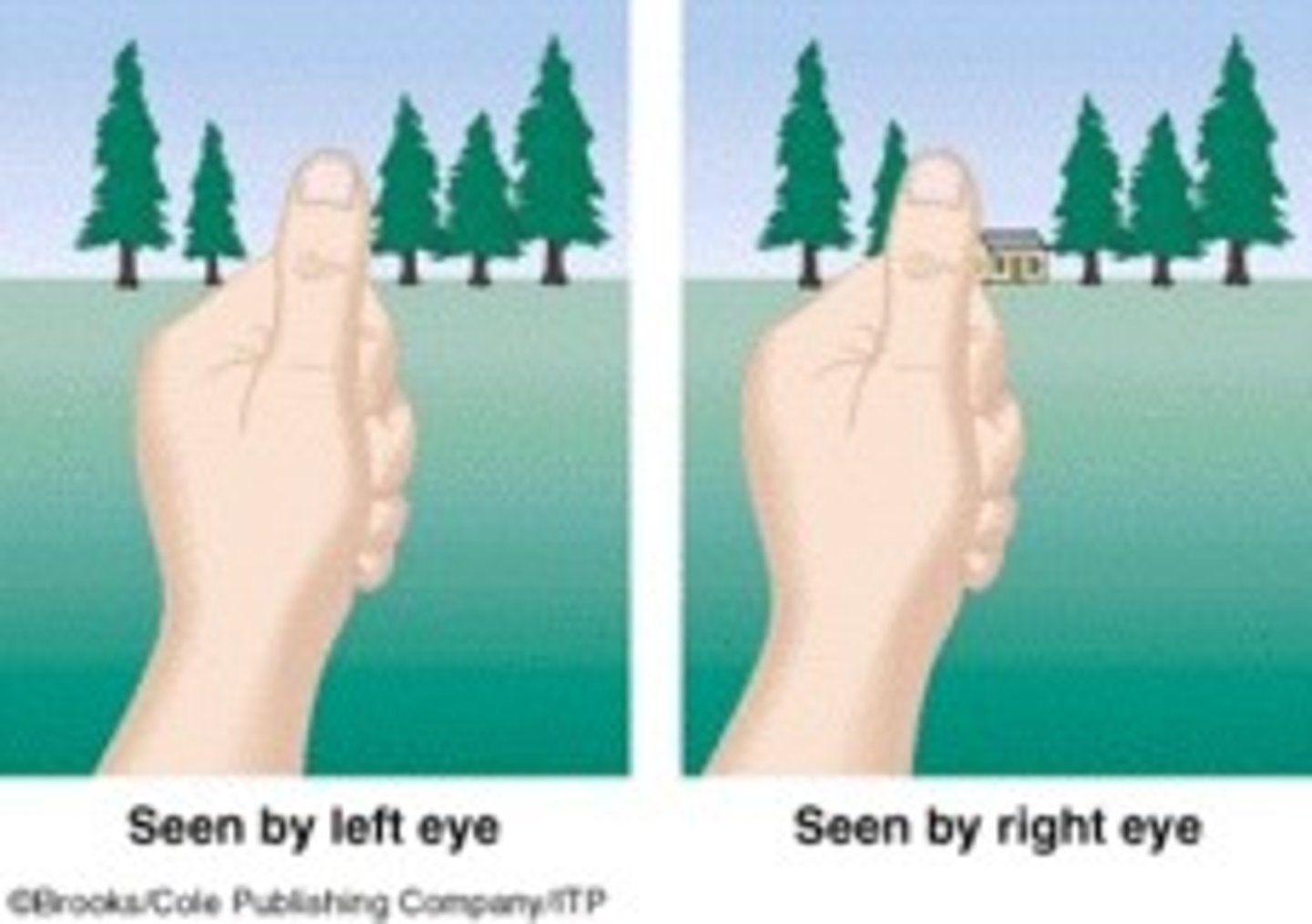
Convergence
Eyes turning inward to focus on close objects.
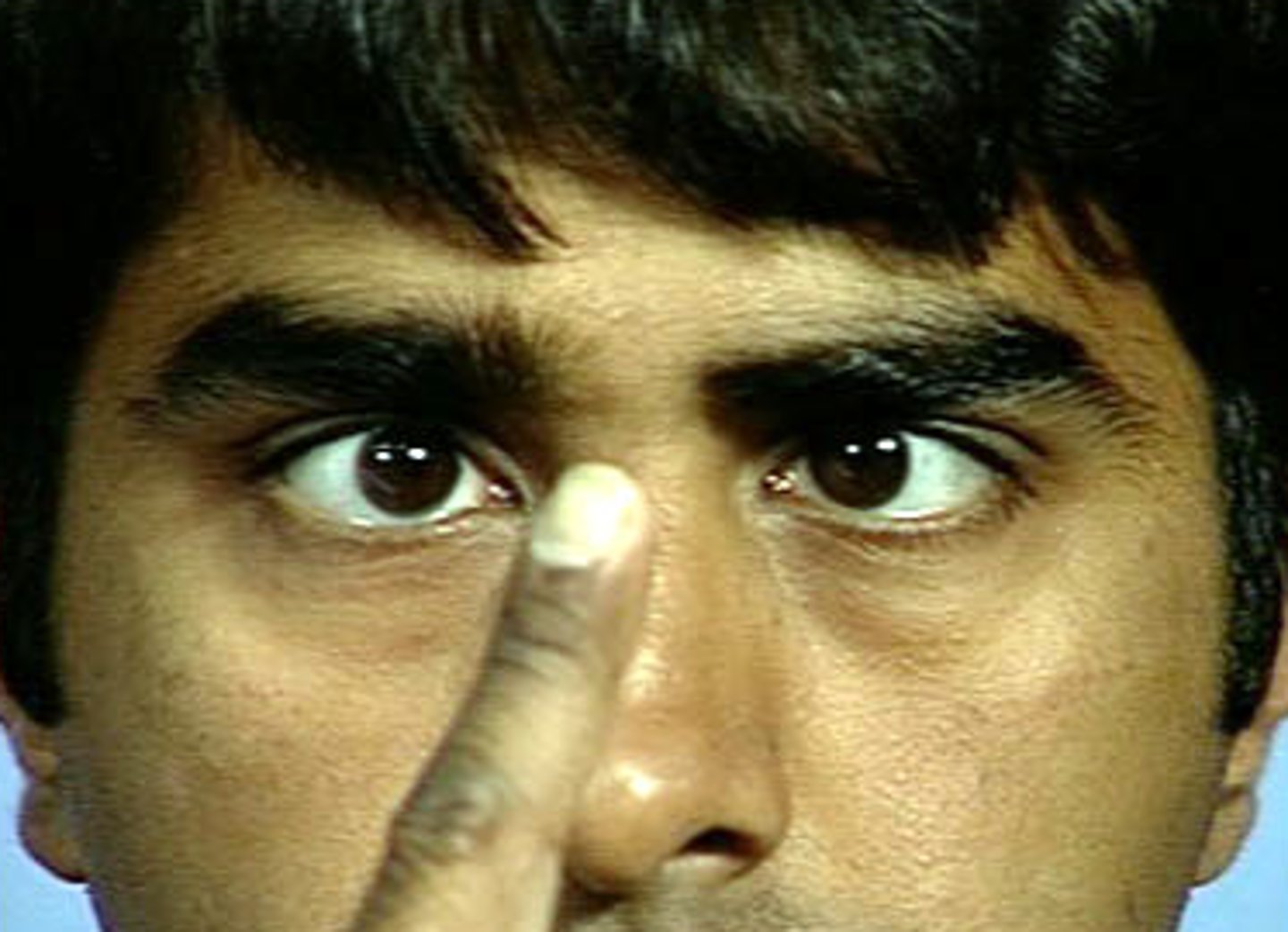
Linear perspective
Monocular Depth Cue. Parallel lines converging in the distance. (Like art)
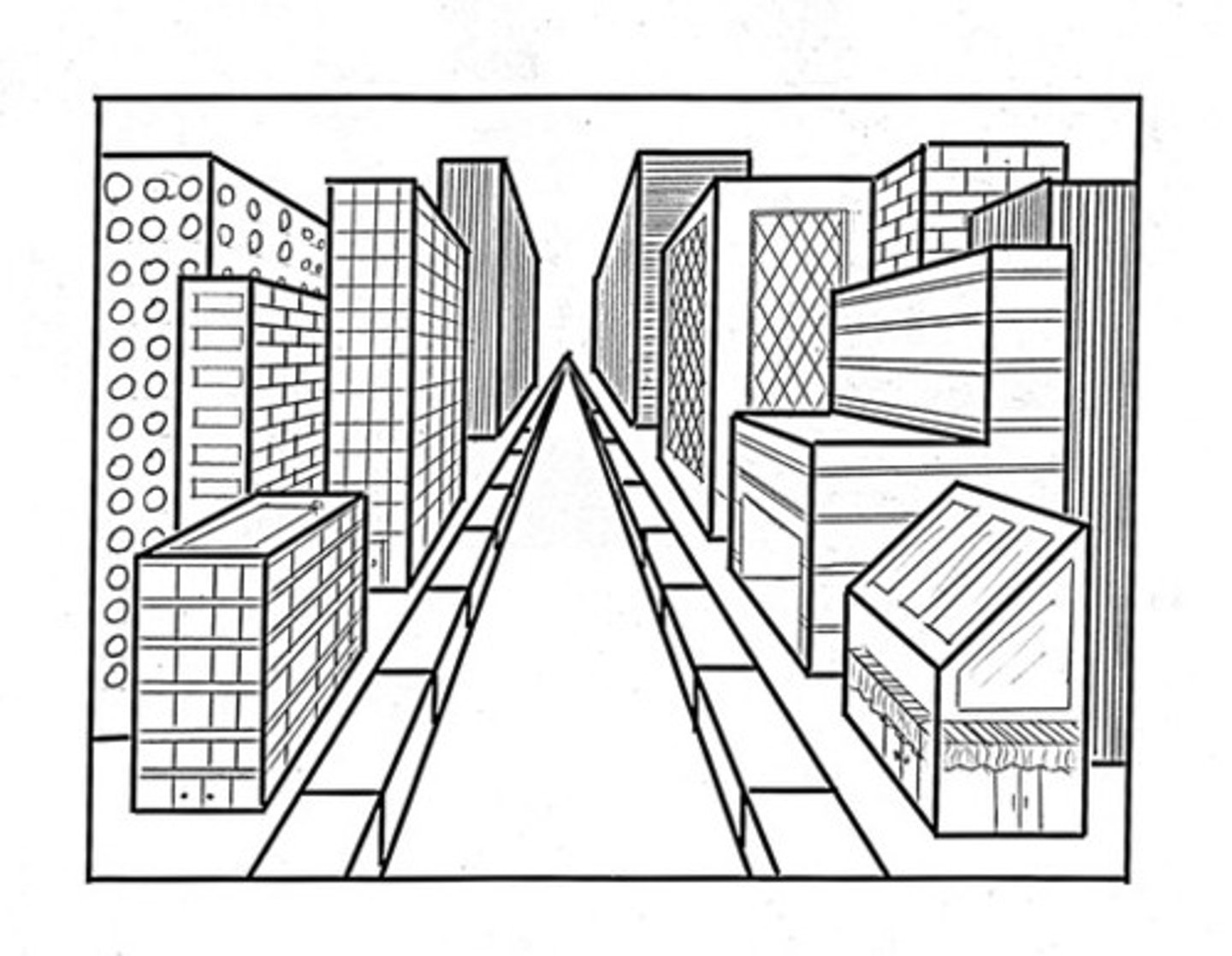
Texture gradient
Monocular Depth Cue. Objects appearing denser as distance increases. (Further flowers are smaller and harder to see)

Interposition
Monocular Depth Cue. Closer objects block farther ones. (Blue is closer because it is "over/blocking" red)
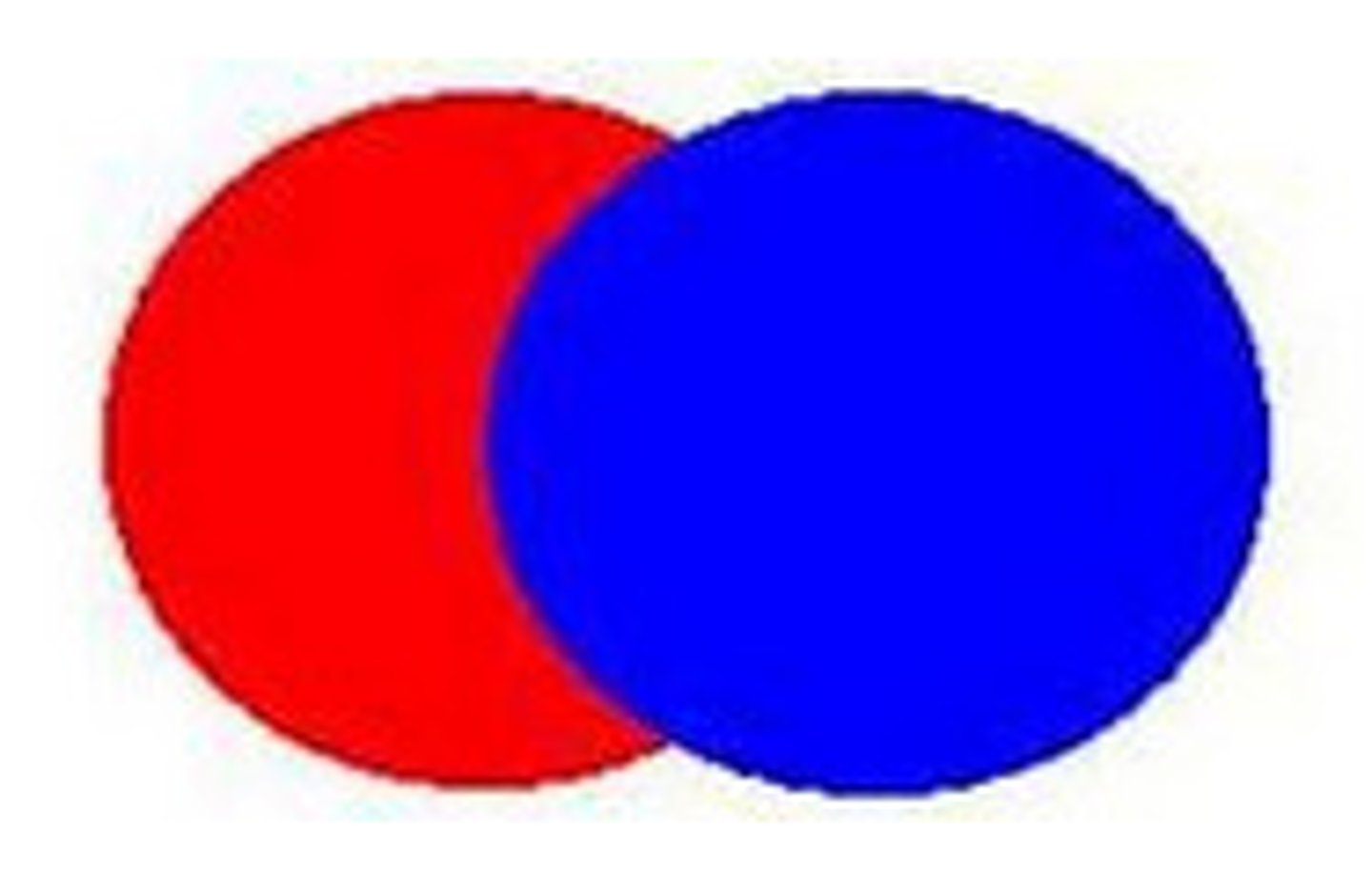
Relative clarity
Monocular Depth Cue. Distant objects appear hazier.

Relative size
Monocular Depth Cue. Smaller images are perceived as farther away. (Left coke can is further away because it is smaller)
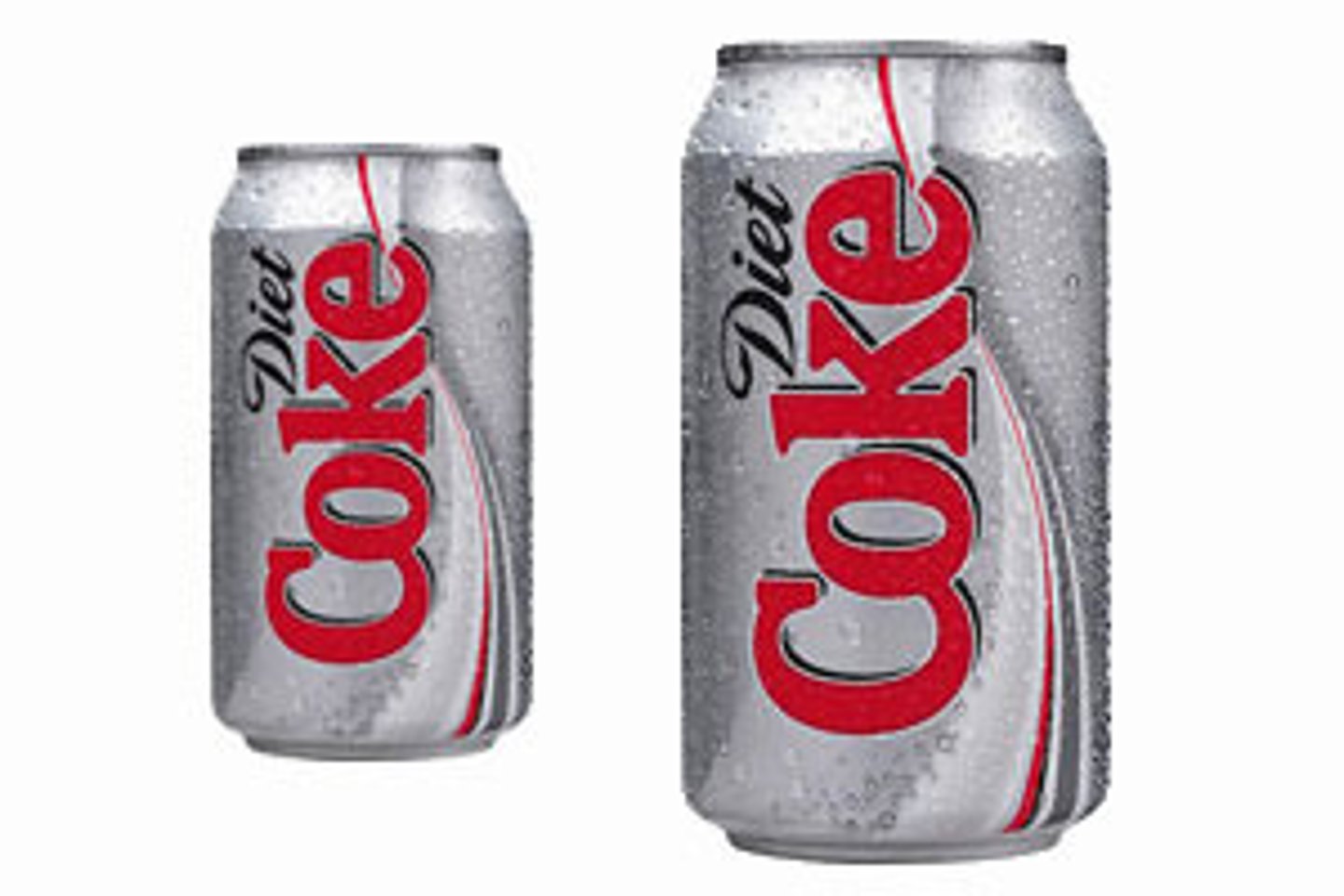
Perceptual constancy
Monocular Depth Cue. the tendency to perceive an object you are familiar with as having a constant shape, size, and brightness despite the stimuli changes that occur
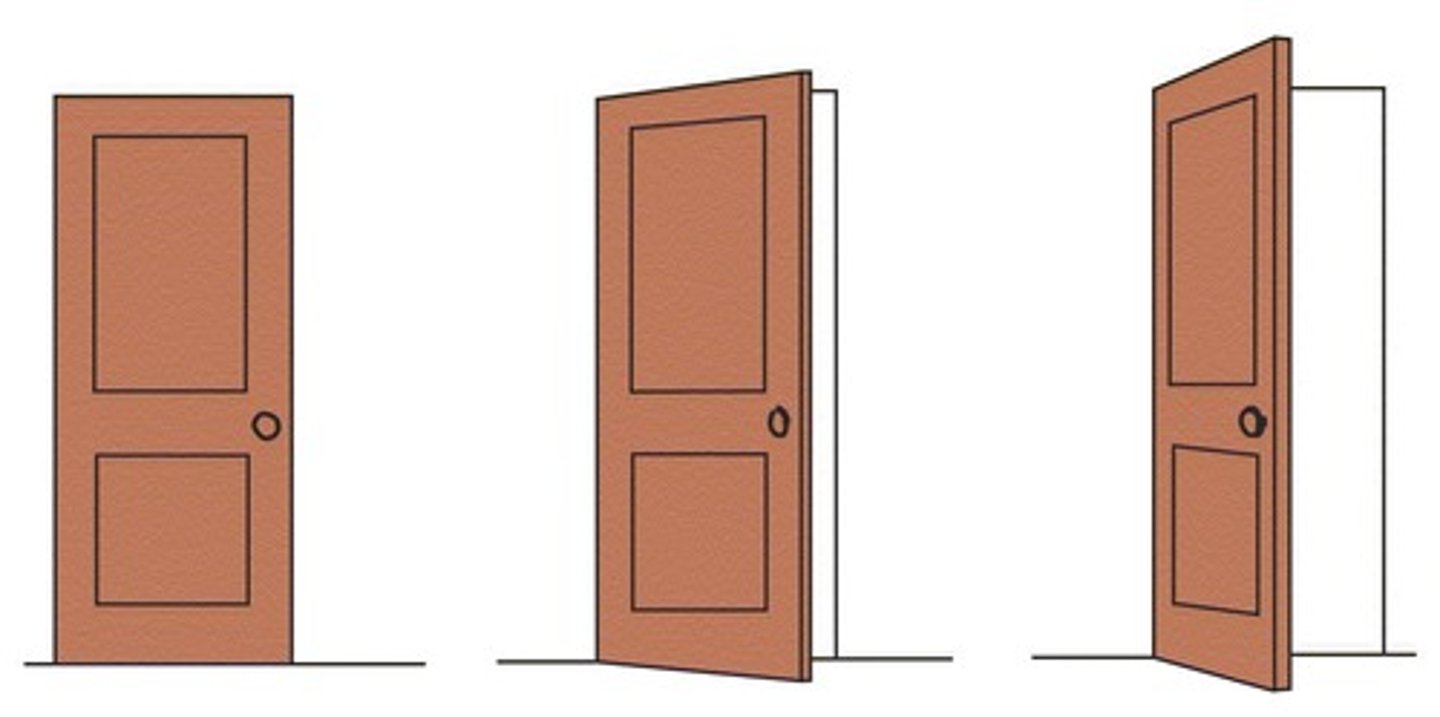
Frequency
Determines pitch. Inverse of wavelength.
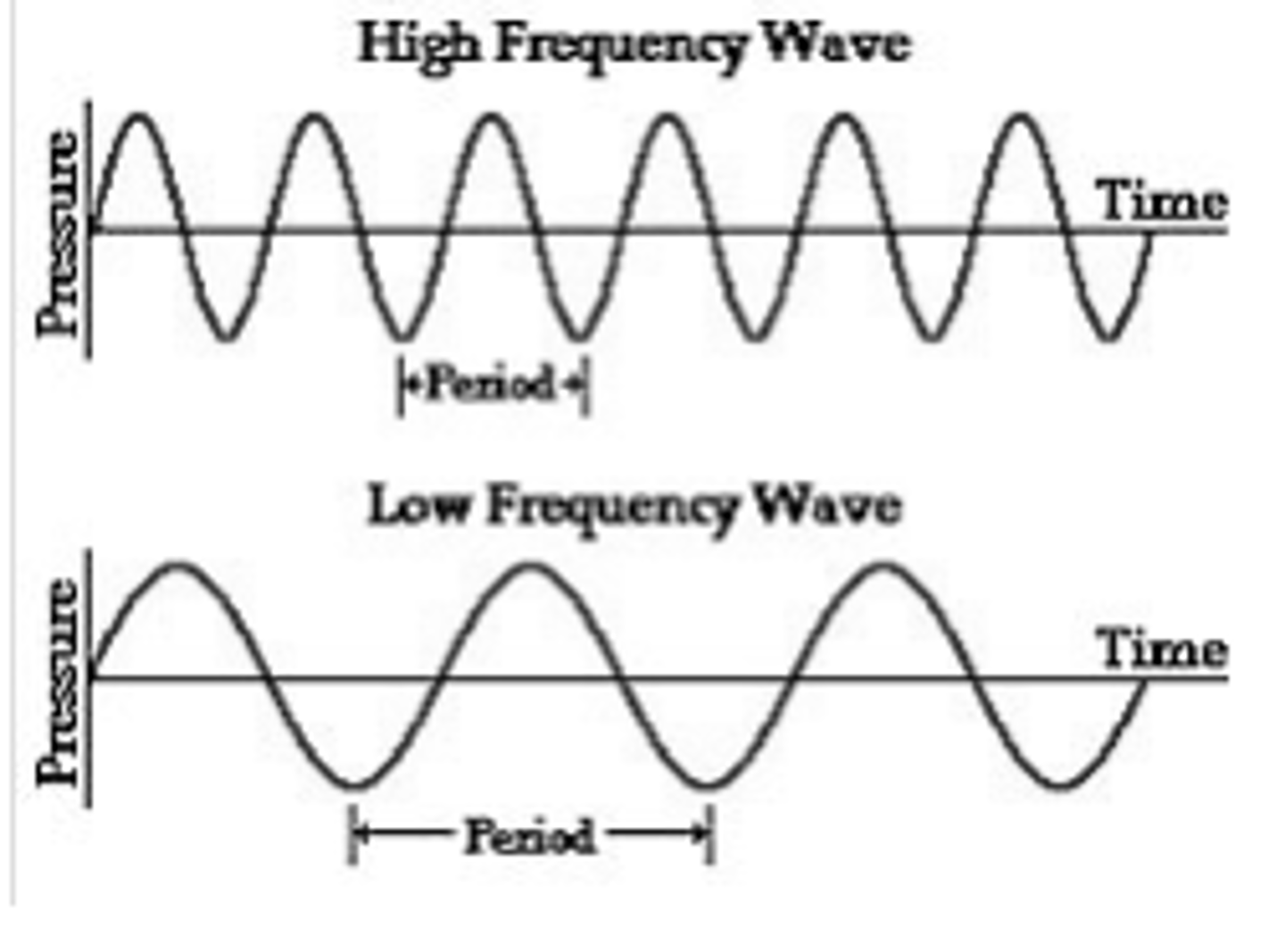
Timbre
Quality of sound that distinguishes it from others
Volley theory
the idea that groups of neurons in the auditory system fire in rapid succession, creating a "volley" of nerve impulses, allowing the brain to perceive higher frequencies of sound than any single neuron could fire on its own
Cochlea
Coiled structure containing auditory receptors. Recognizes sound vibrations and sends signals to the brain.
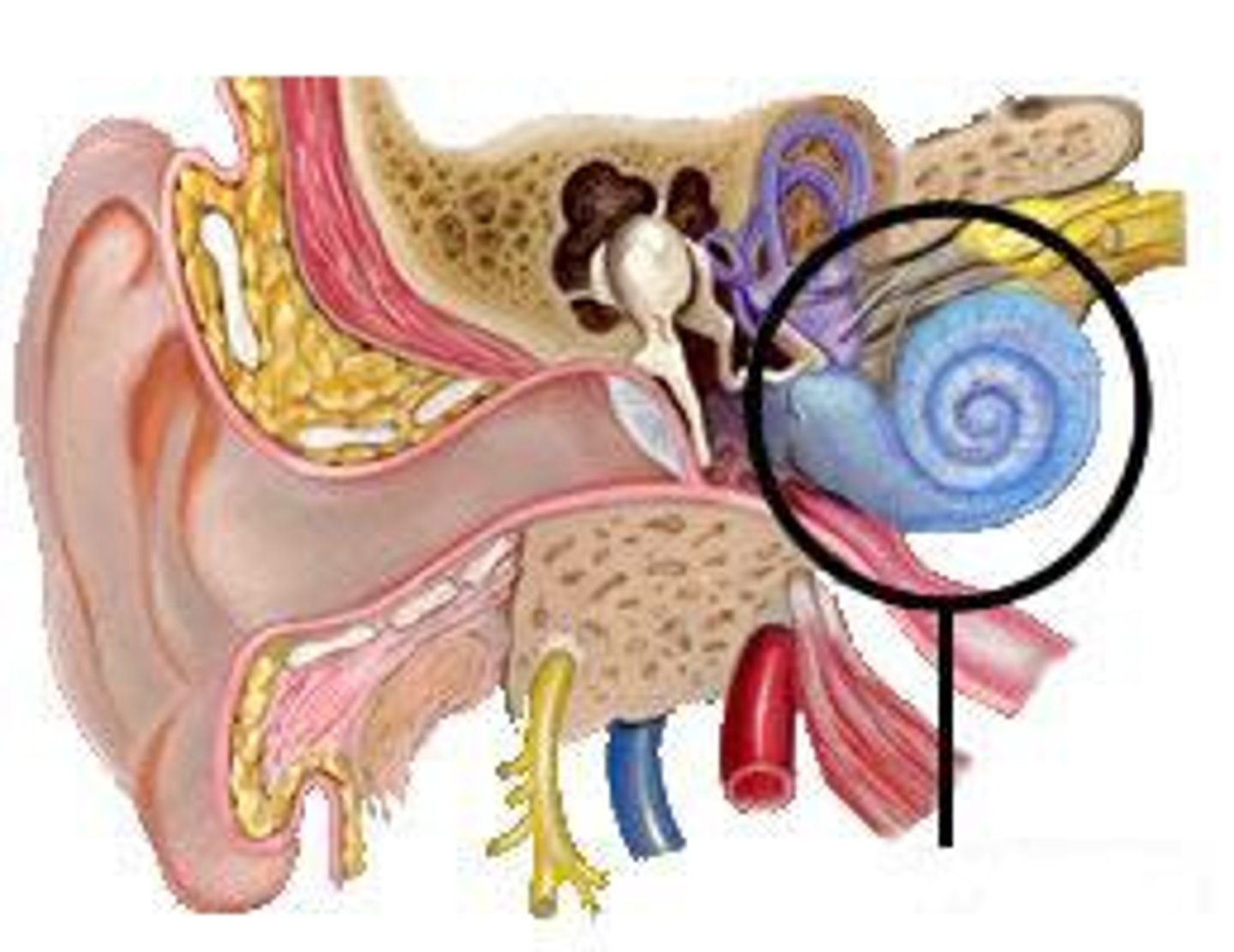
Hair cells
the sensory receptor cells located within the inner ear, specifically in the cochlea, which convert mechanical sound waves into electrical signals that the brain can interpret (Where transduction occurs fr)
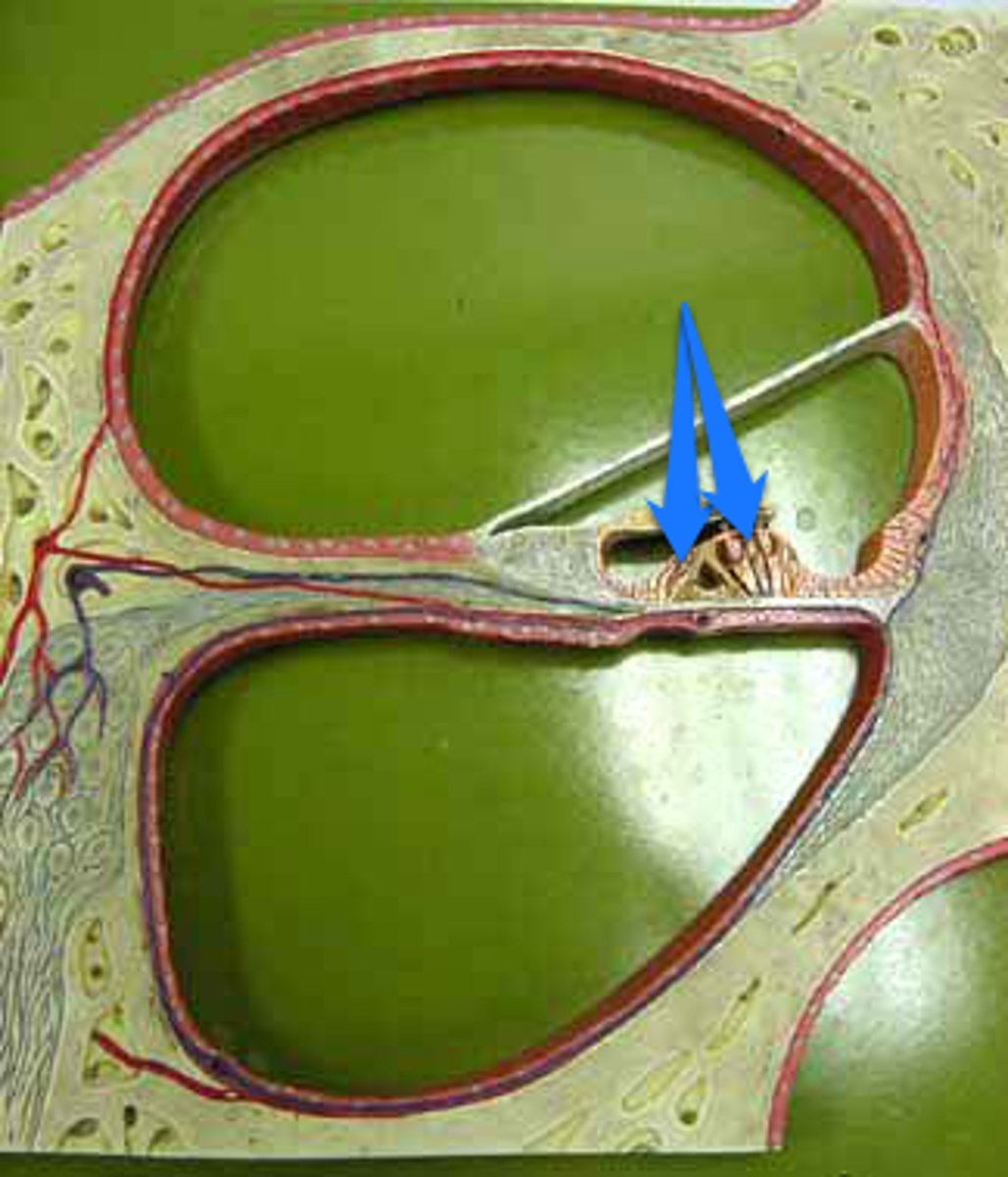
Place theory
Different pitches activate specific areas of the cochlea.
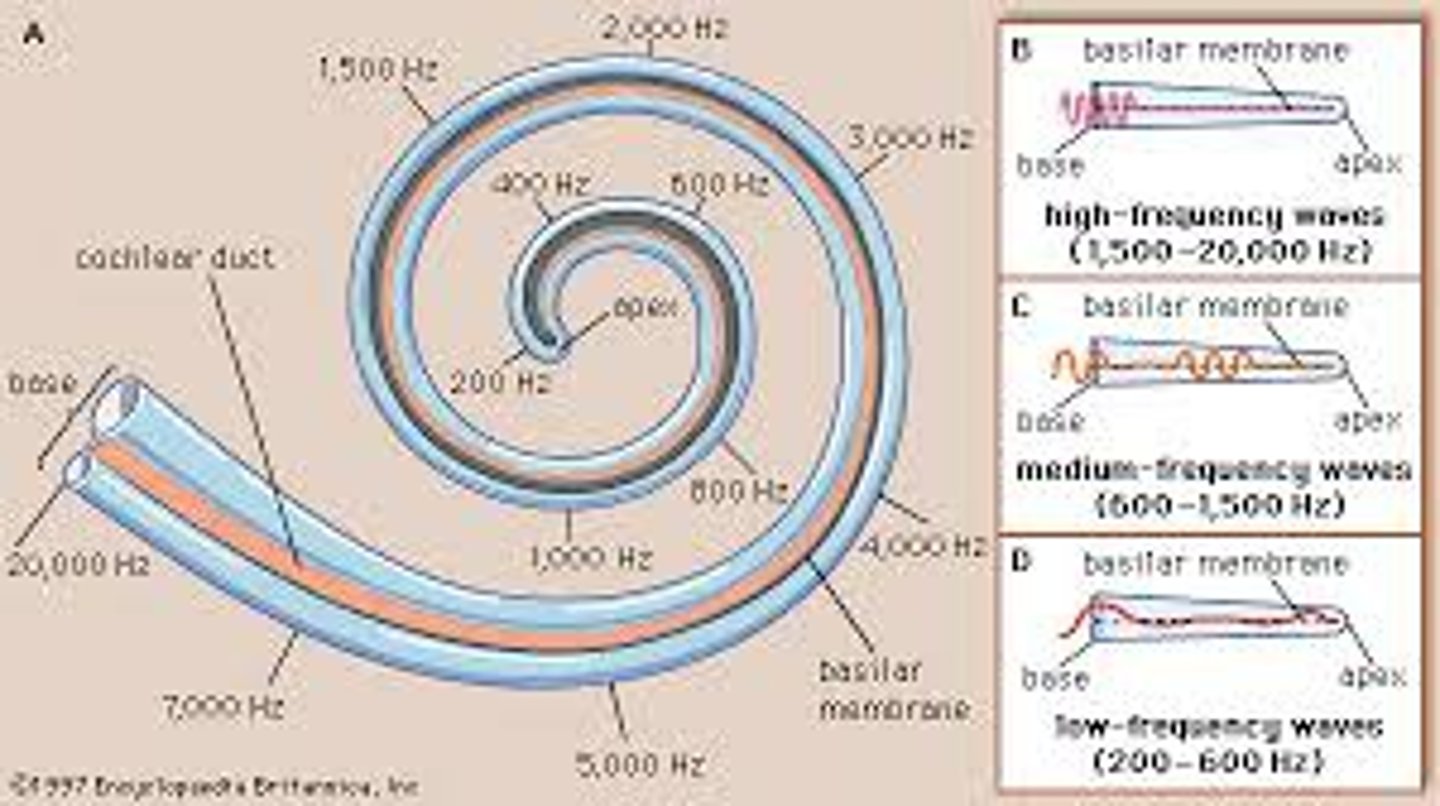
Frequency theory
Pitch is determined by the rate of neural firing.
Sound localization
Determining the direction of a sound source.
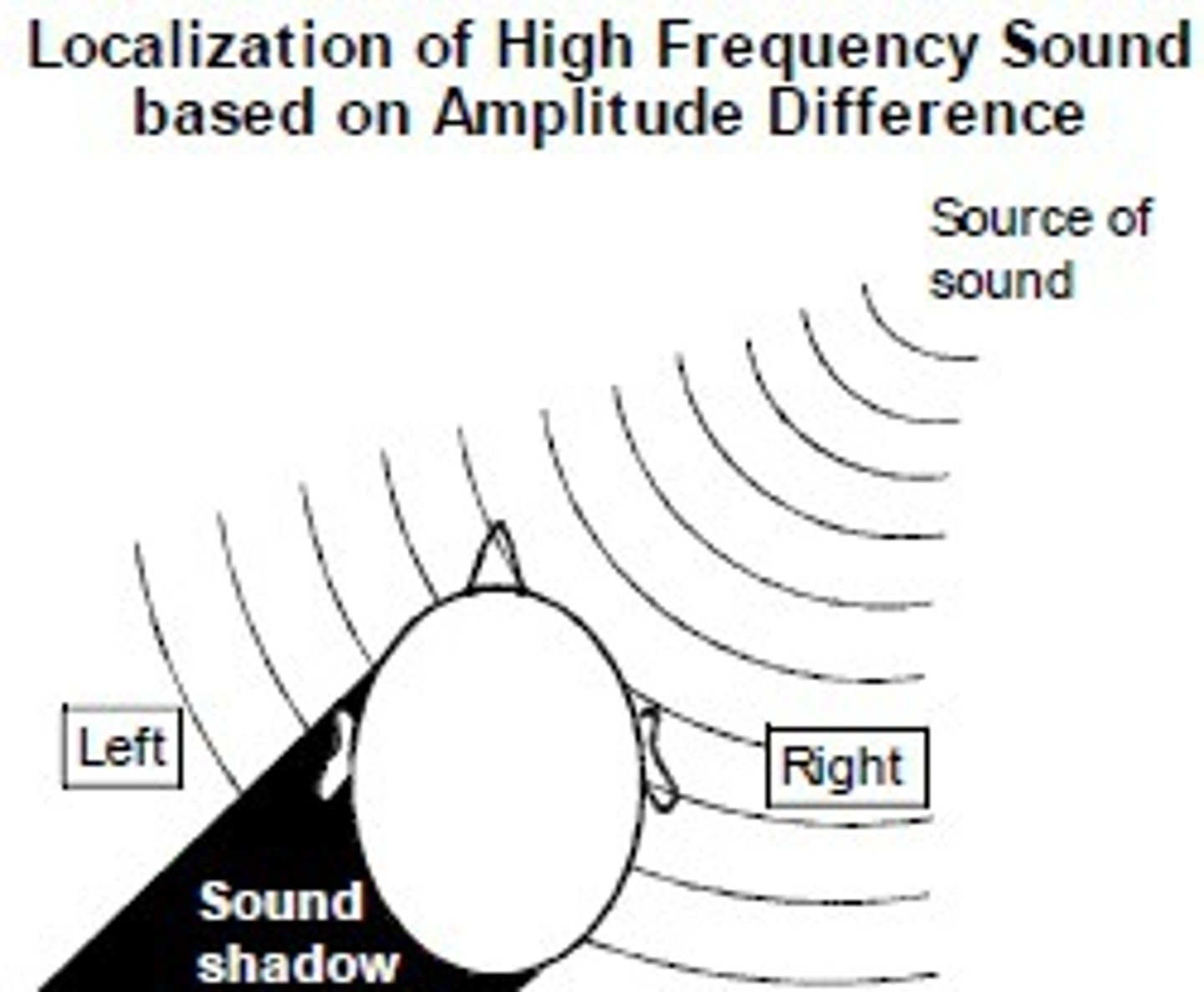
Sensorineural deafness
a type of hearing loss caused by damage to the inner ear, specifically the cochlea's receptor cells or the auditory nerve, which prevents the proper transmission of sound signals to the brain
Conduction deafness
a type of hearing loss caused by damage to the outer or middle ear structures (like the eardrum or ossicles), which prevents sound waves from being effectively conducted to the inner ear, resulting in reduced hearing ability
Vestibular sense
Detects balance and body orientation via the semicircular canals.
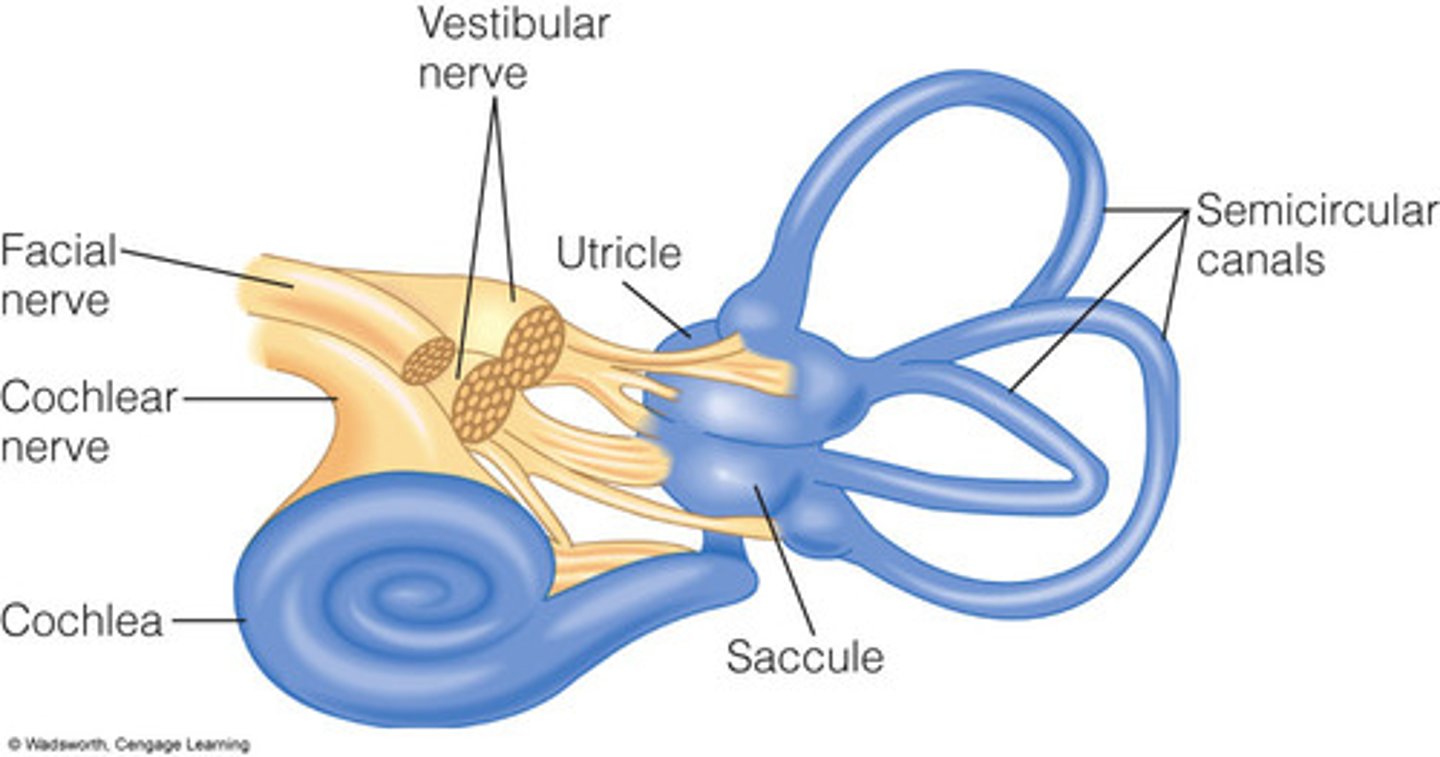
Taste (gustatory system)
Taste buds detect chemical stimuli.
6 types of taste
Sweet, sour, salty, bitter, umami (savory), oleogustus (fat).
Supertasters/medium tasters/nontasters
Variations in taste sensitivity.
Sensory adaptation
Decreased sensitivity to constant stimulation. (Bad smell becomes less noticeable when you sit in it for hours)
Olfactory cilia
tiny, hair-like structures located in the nasal cavity that act as sensory receptors for smell, detecting odor molecules dissolved in mucus and converting them into neural signals that are sent to the brain (hair cells of the nose)
Olfactory bulb
the part of the brain that initially processes smell signals, receiving information from the nose via the olfactory nerve and sending it to other brain regions for further interpretation
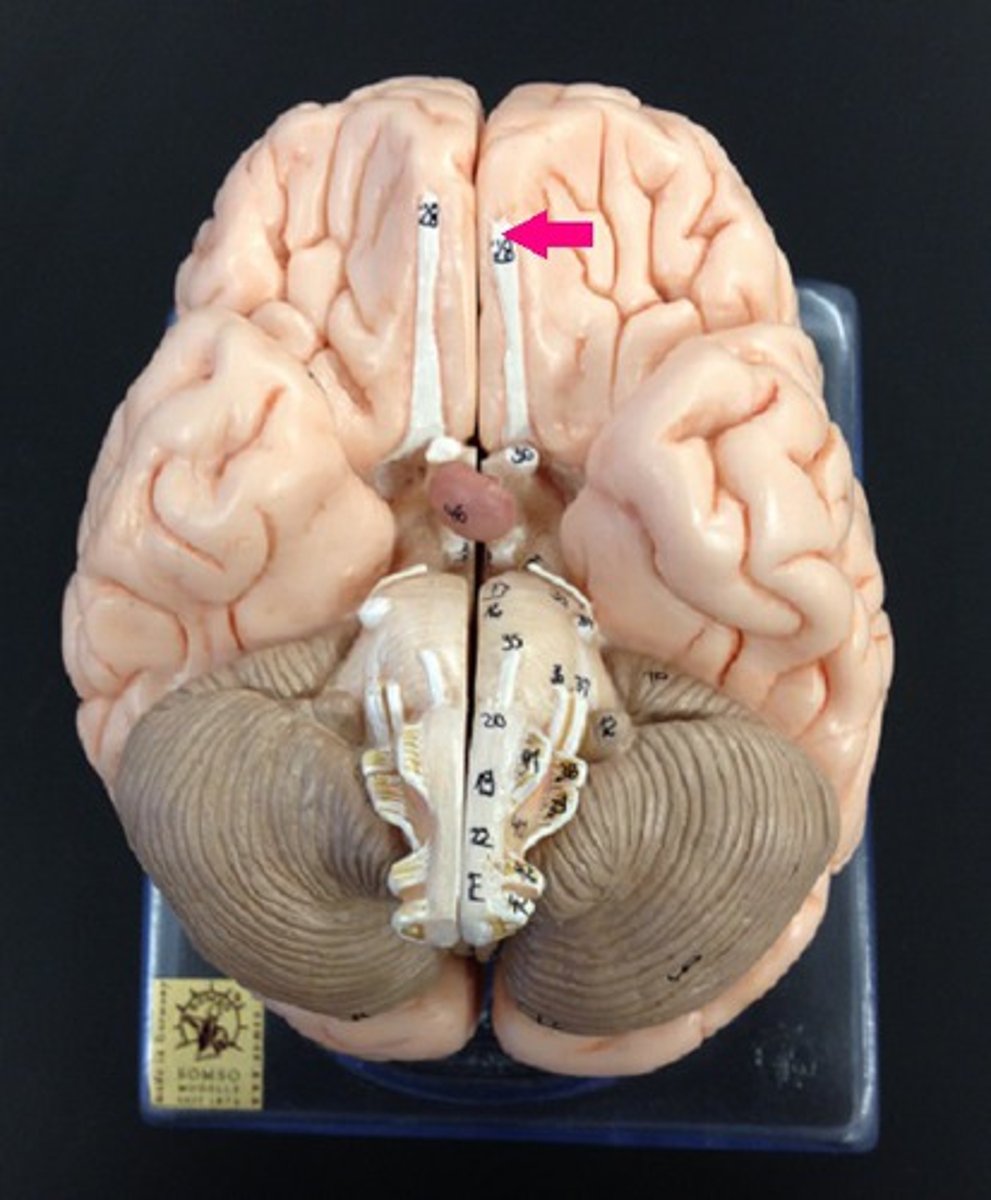
Tactile system
Processes touch sensations.
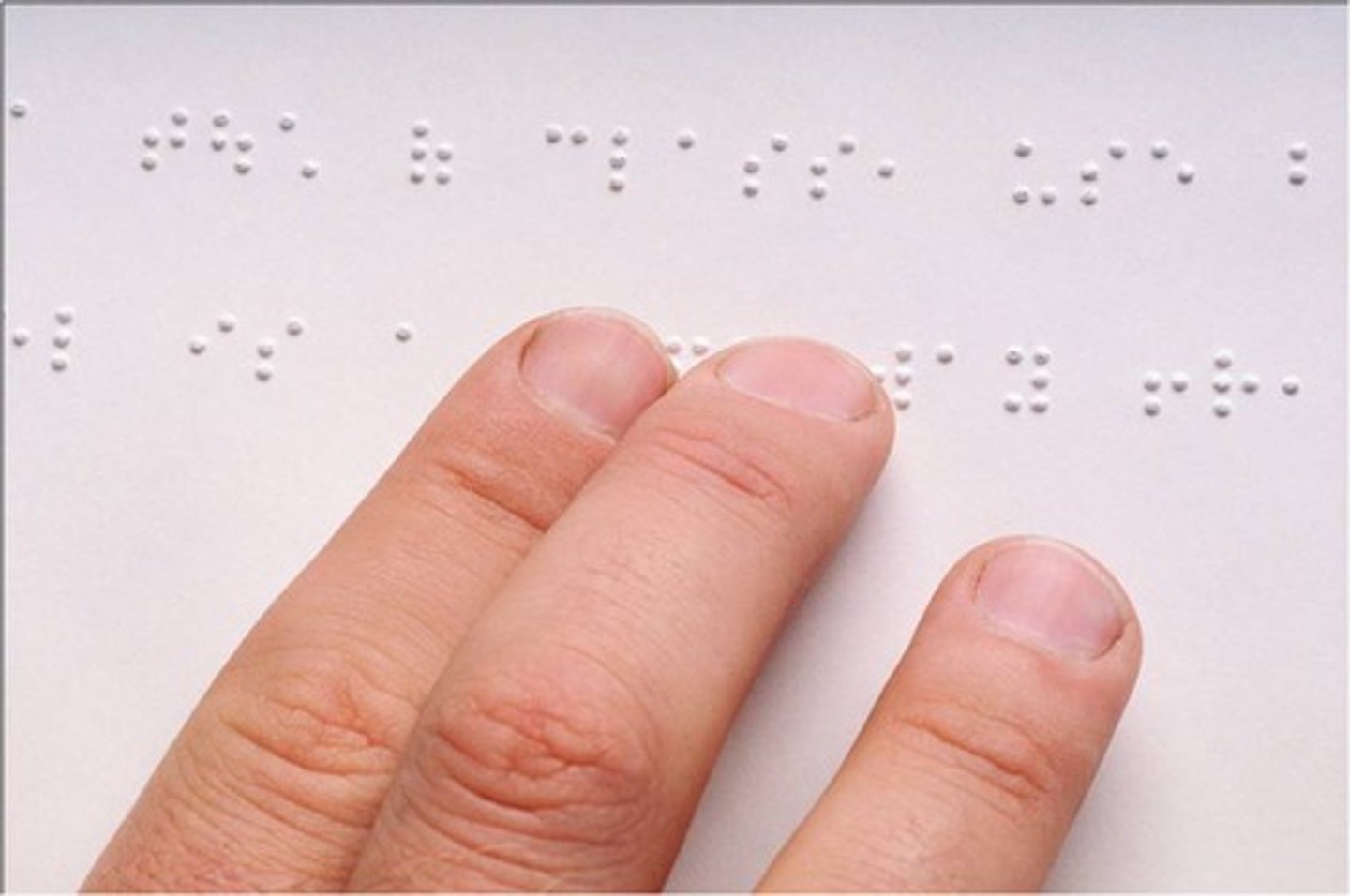
Skin structures
the different layers of the skin, including the epidermis (outer layer) and dermis (inner layer), which contain specialized nerve endings that detect sensations like touch, pressure, temperature, and pain, allowing us to perceive stimuli from the environment through our skin
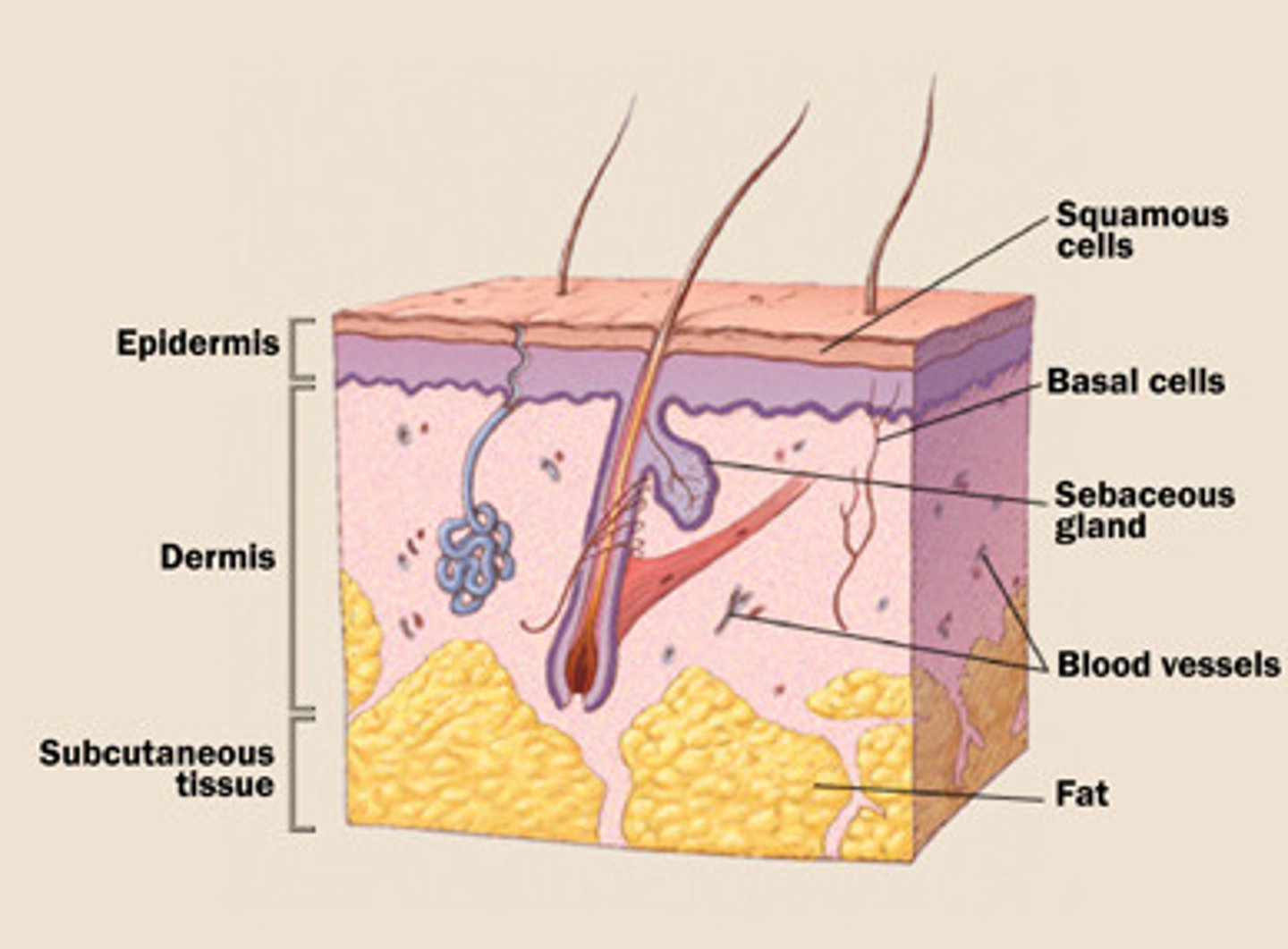
Gate-control theory
The spinal cord can block or allow pain signals to the brain. (acting as a gate)
Schema
Cognitive framework for interpreting information based on past experience.
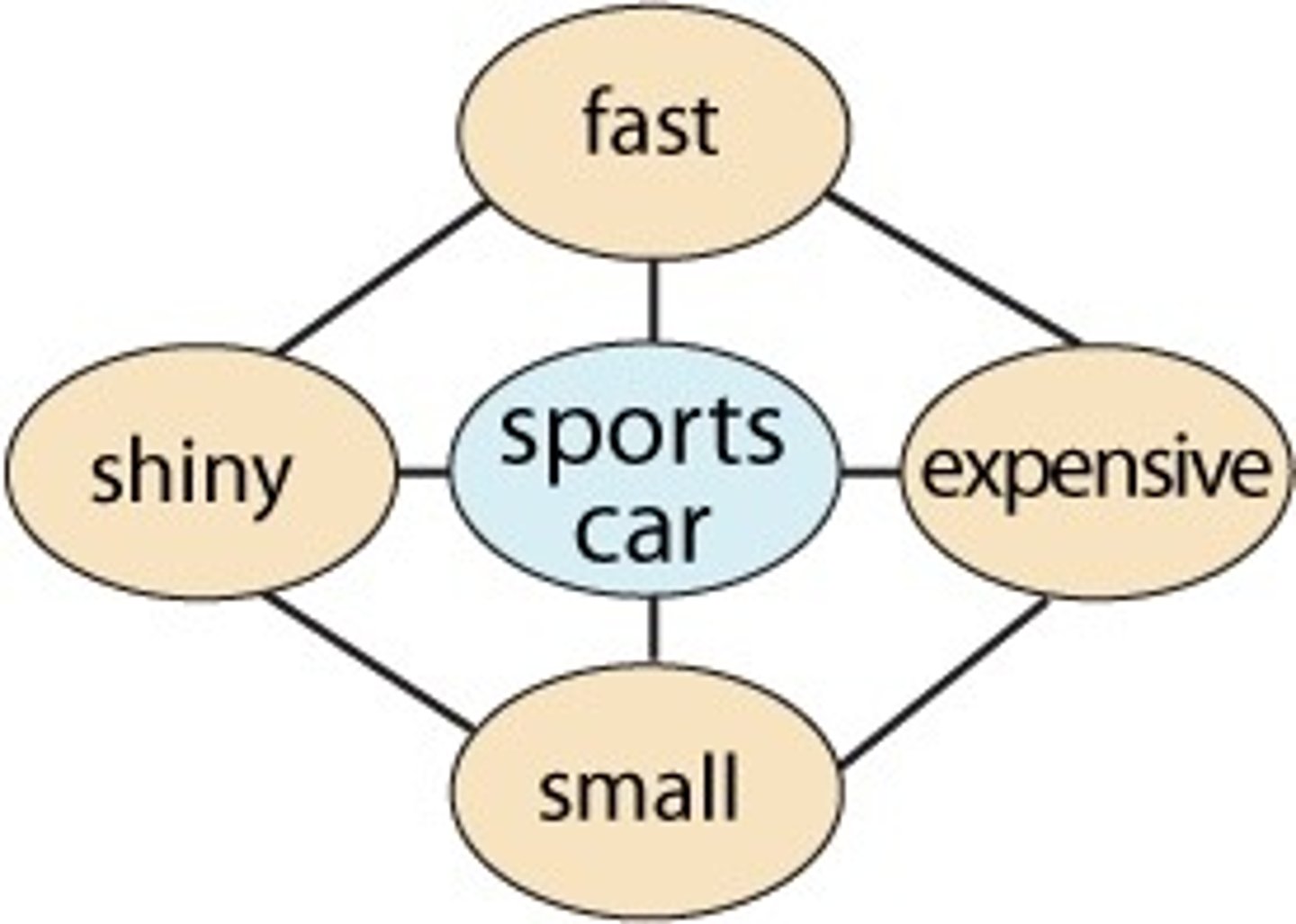
Sensory interaction
The principle that one sense can influence another.
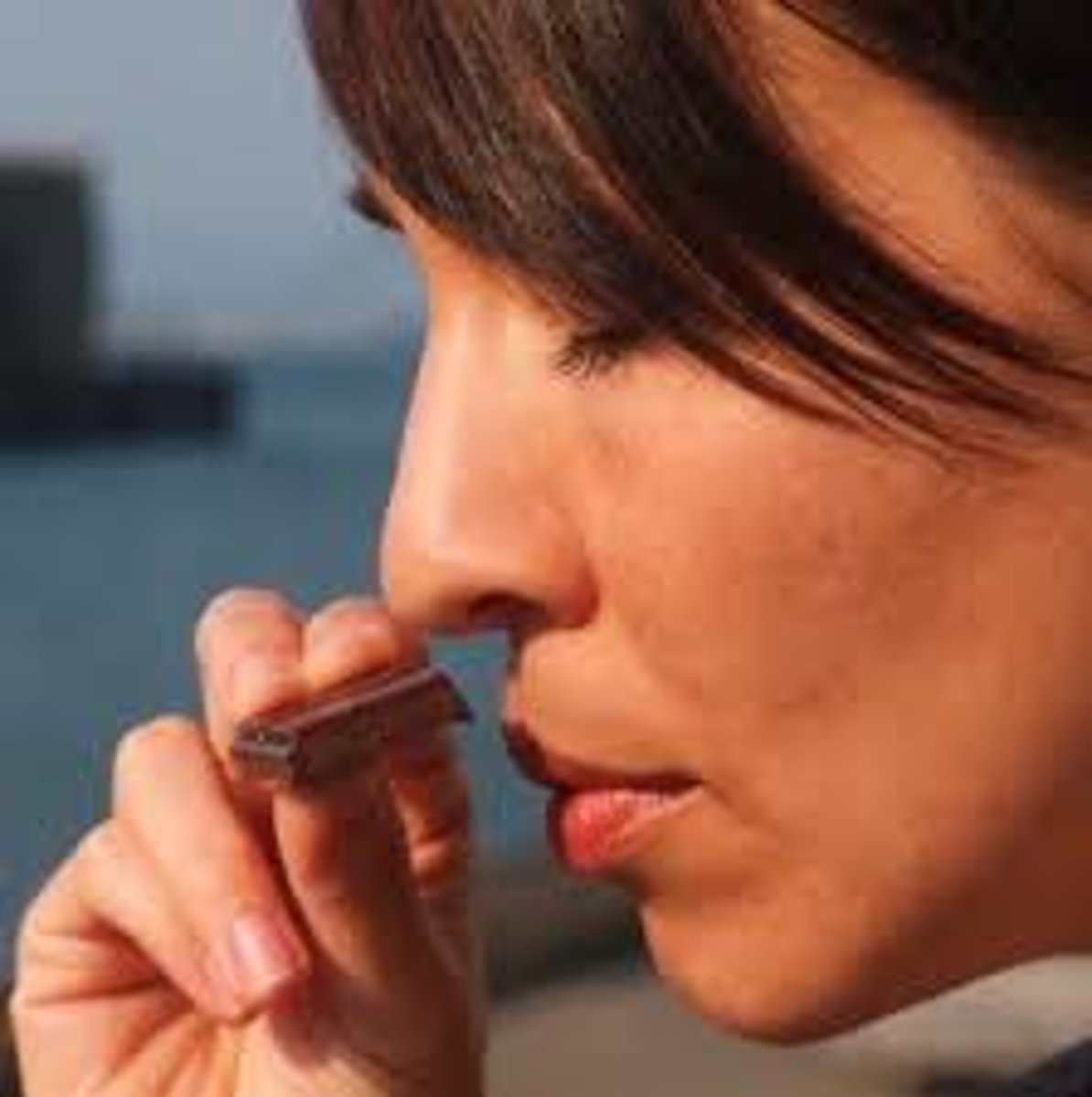
Absolute threshold
minimum amount of stimulation that an organism can detect 50% of the time
Just noticeable difference
The smallest detectable difference between stimuli.
Signal detection theory
Predicts when we will detect weak signals amid background noise.
Four possible outcomes:
Hit - Detecting signals when present.
Misses-Failing to detect signals when present
False Alarms-detecting signals when they are absent
Correct Rejection-Not detecting signals when they are absent
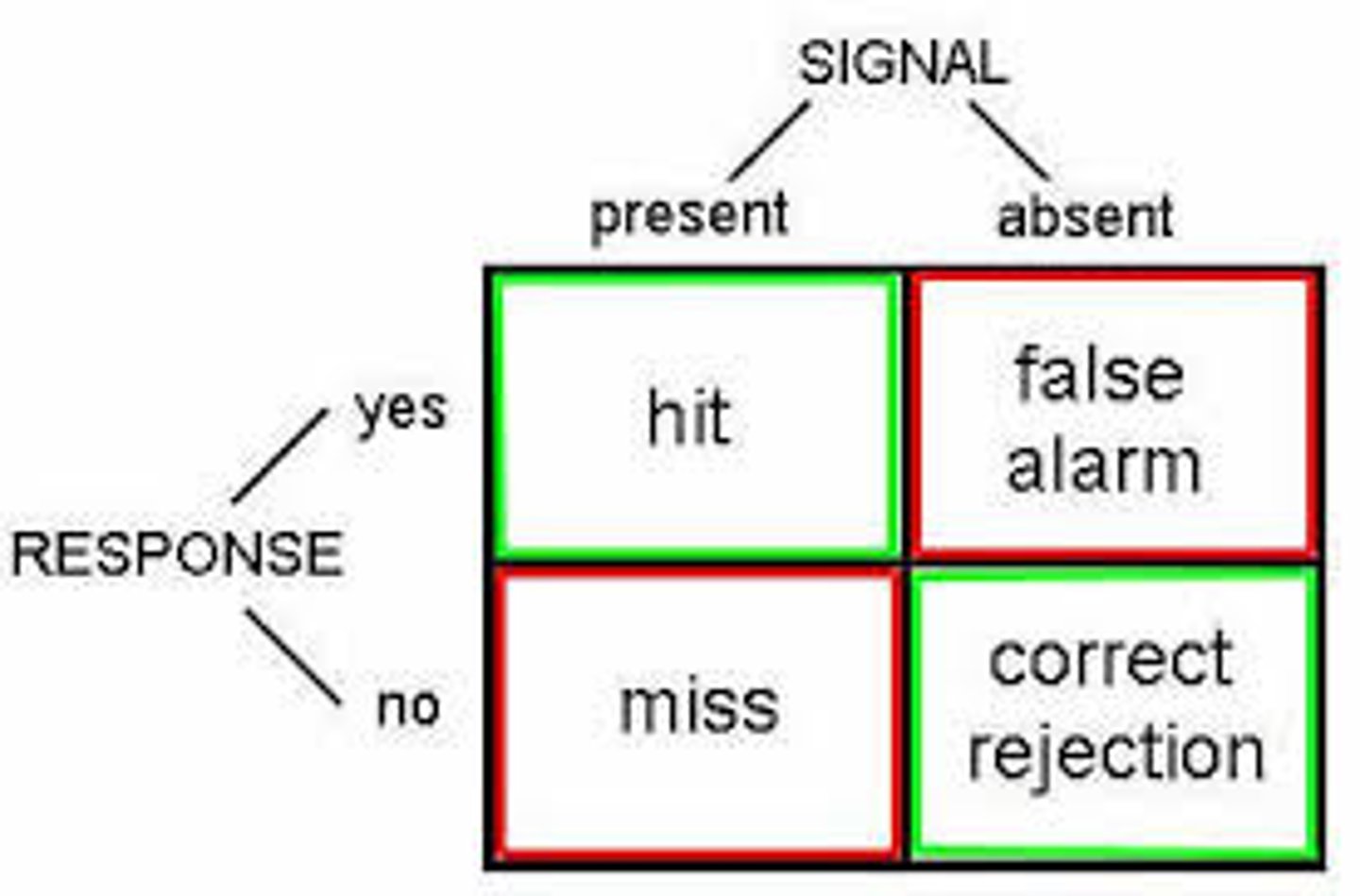
Weber's Law
The change in a stimulus needed for detection is proportional to the original stimulus (1/30th of size).
Pheromones
a chemical signal released by an organism that influences the behavior of other members of the same species
Synesthesia
A condition where stimulation of one sense triggers another.
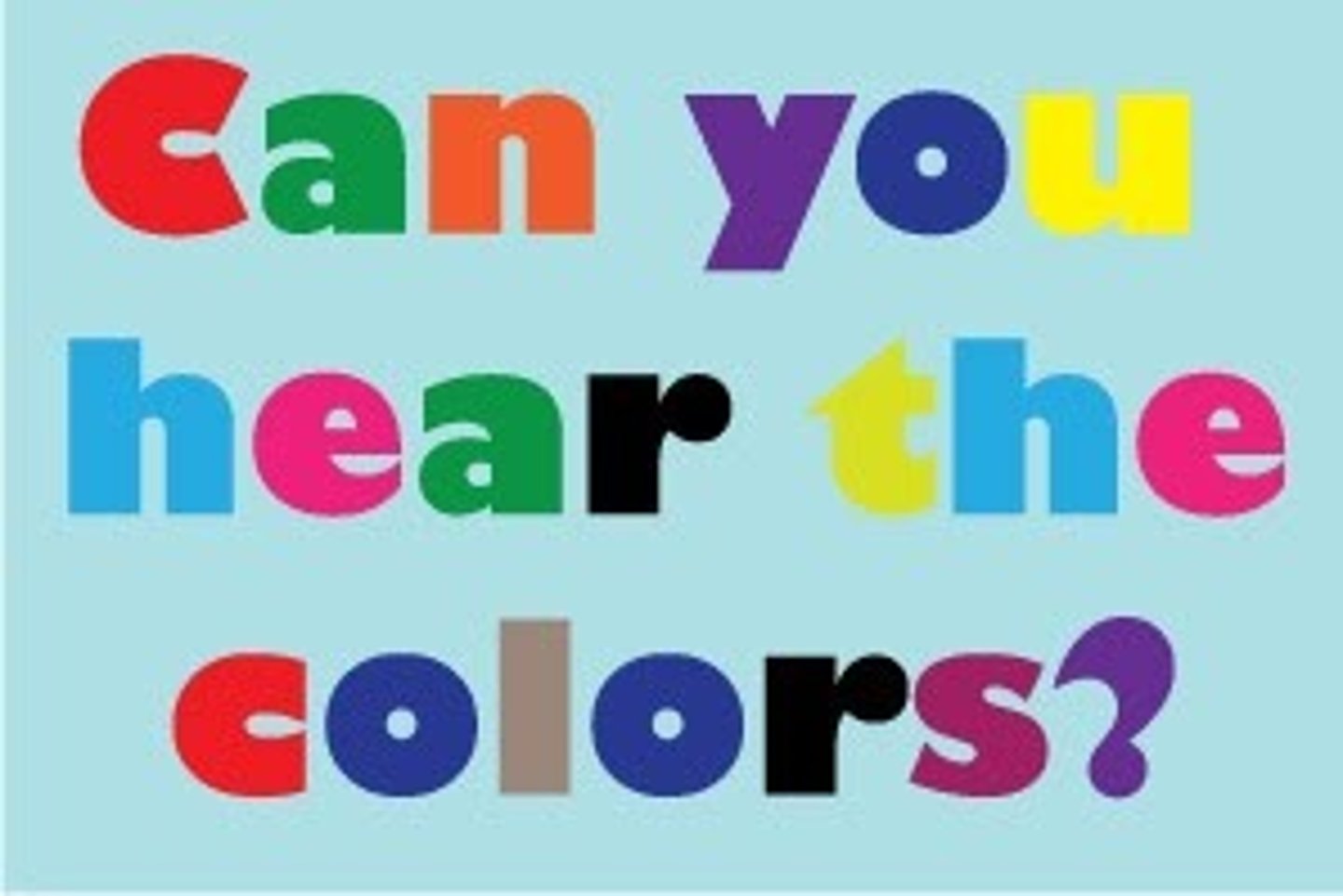
Kinesthetic sense
Awareness of body position and movement.
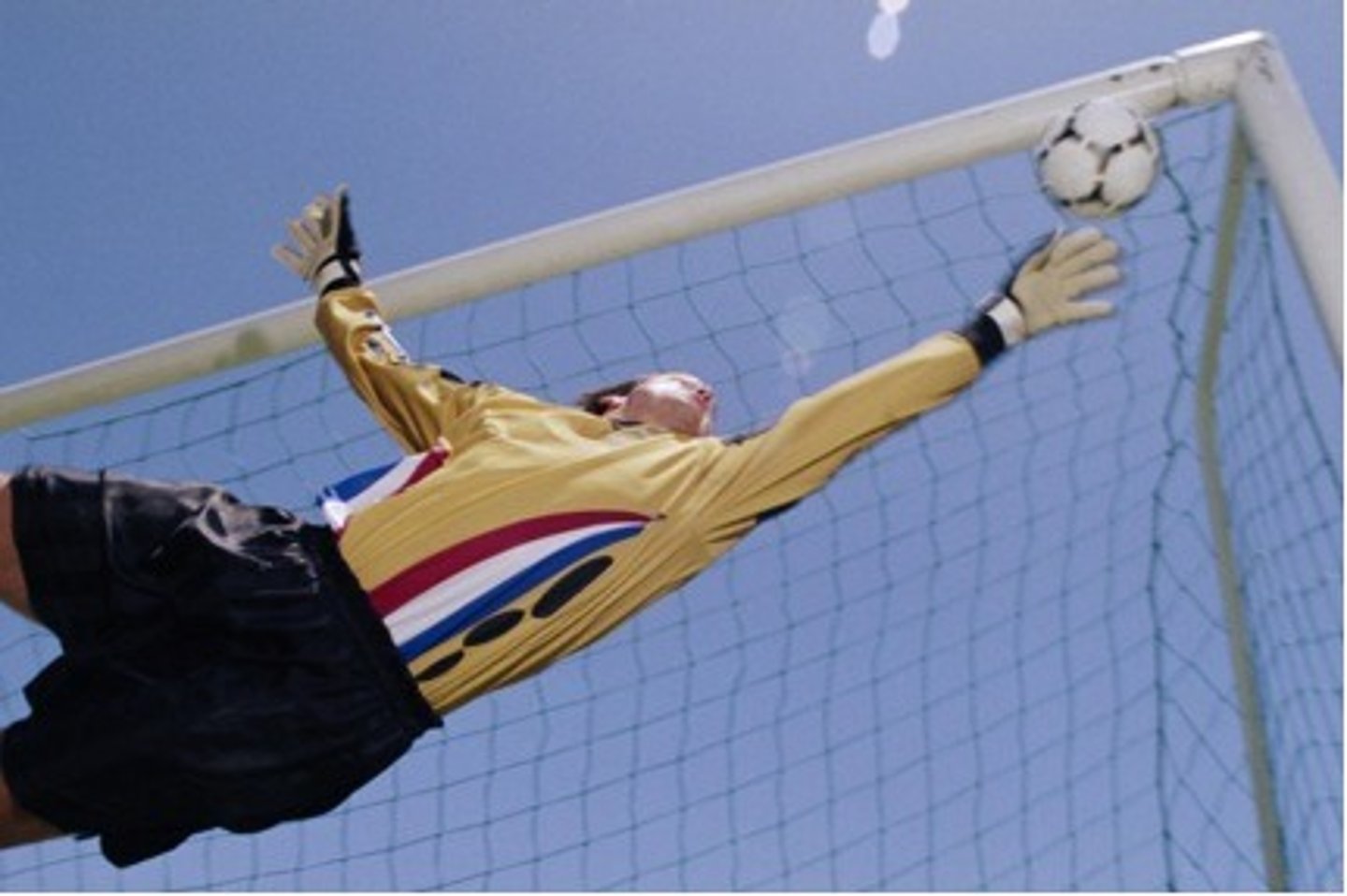
Selective attention
Focusing on one stimulus while ignoring others.
Cocktail party phenomenon
Focusing on a specific voice in a noisy environment while recognizing noises (such as your name) from other voices.
Change blindness
Failure to notice subtle changes in the environment. (Example: Changed shirt of person speaking in a video)
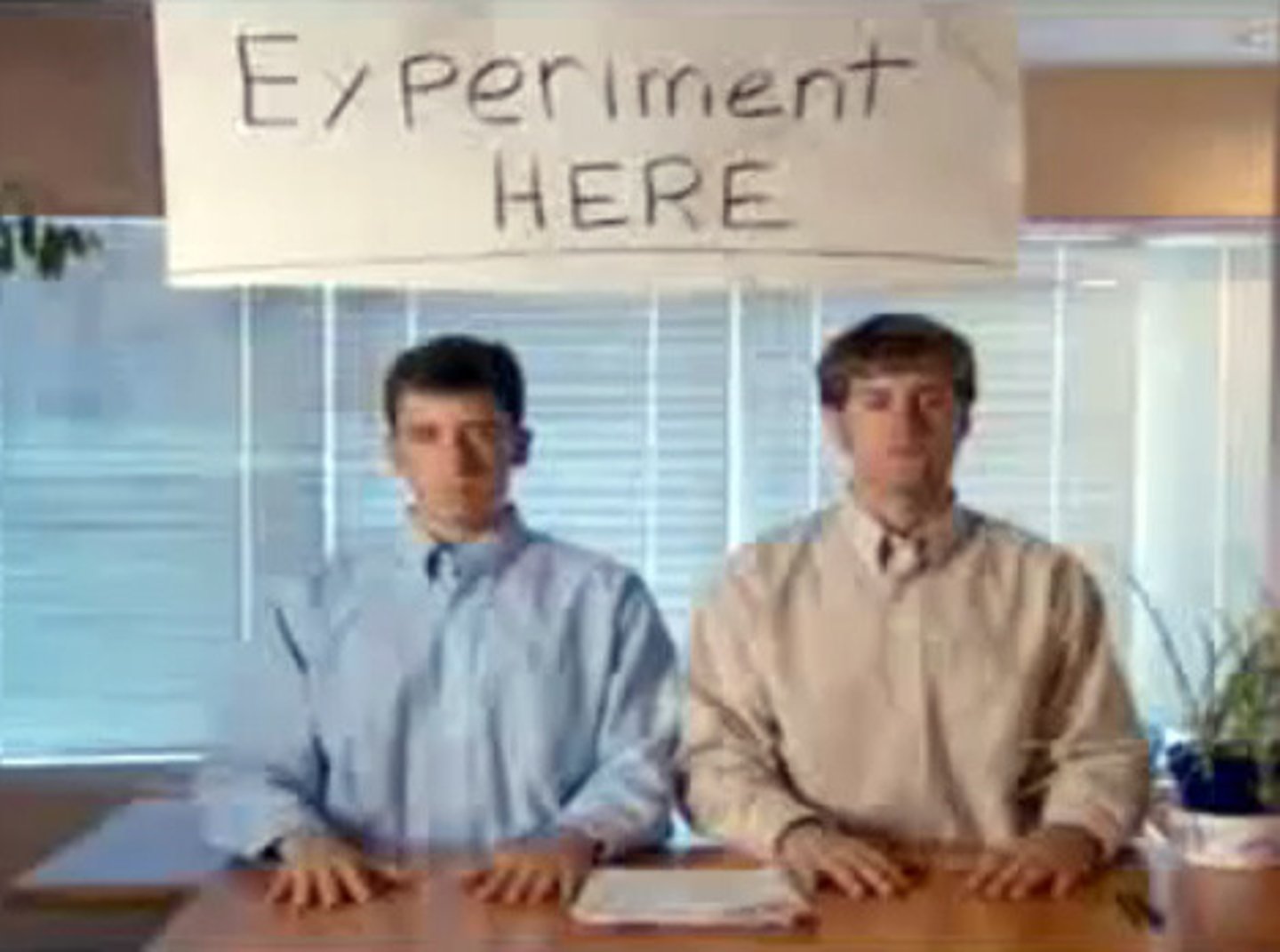
Inattentional blindness
Failure to notice visible objects due to focus elsewhere. (Example: Not seeing moonwalking gorilla in basketball video because you are focusing on basketball)
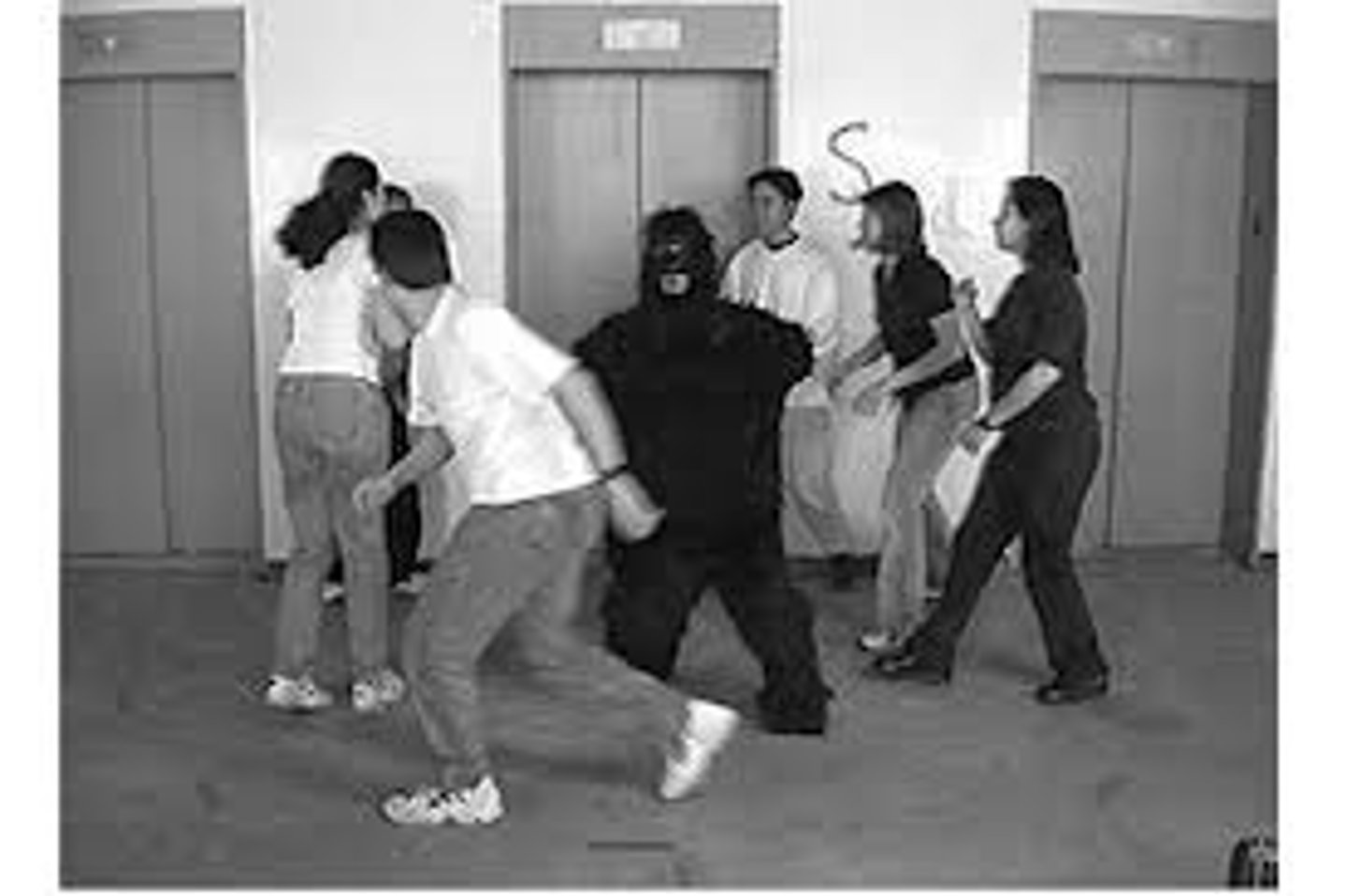
Afterimage
Visual image that persists after the stimulus is removed.
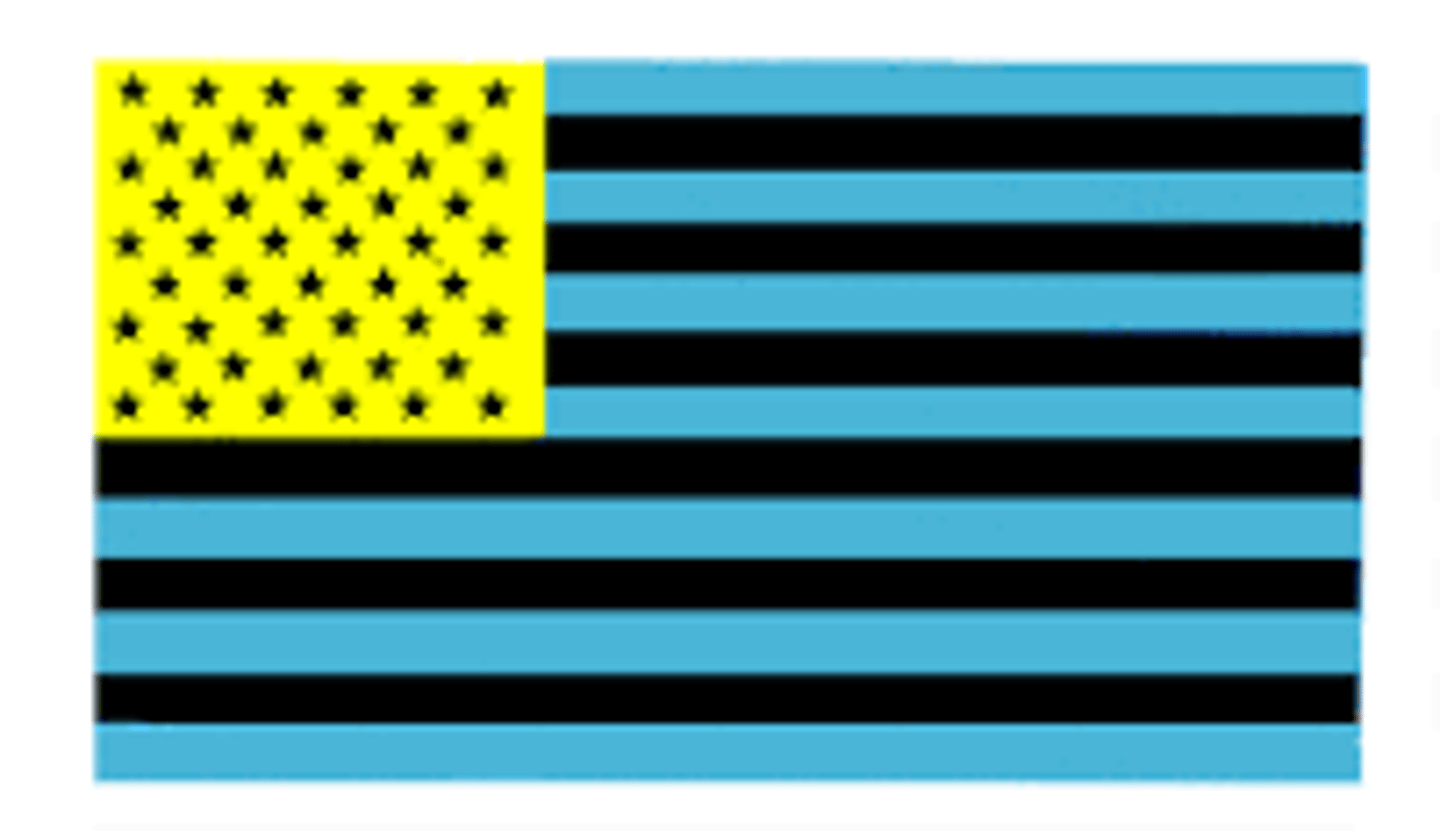
Prosopagnosia
Inability to recognize faces.
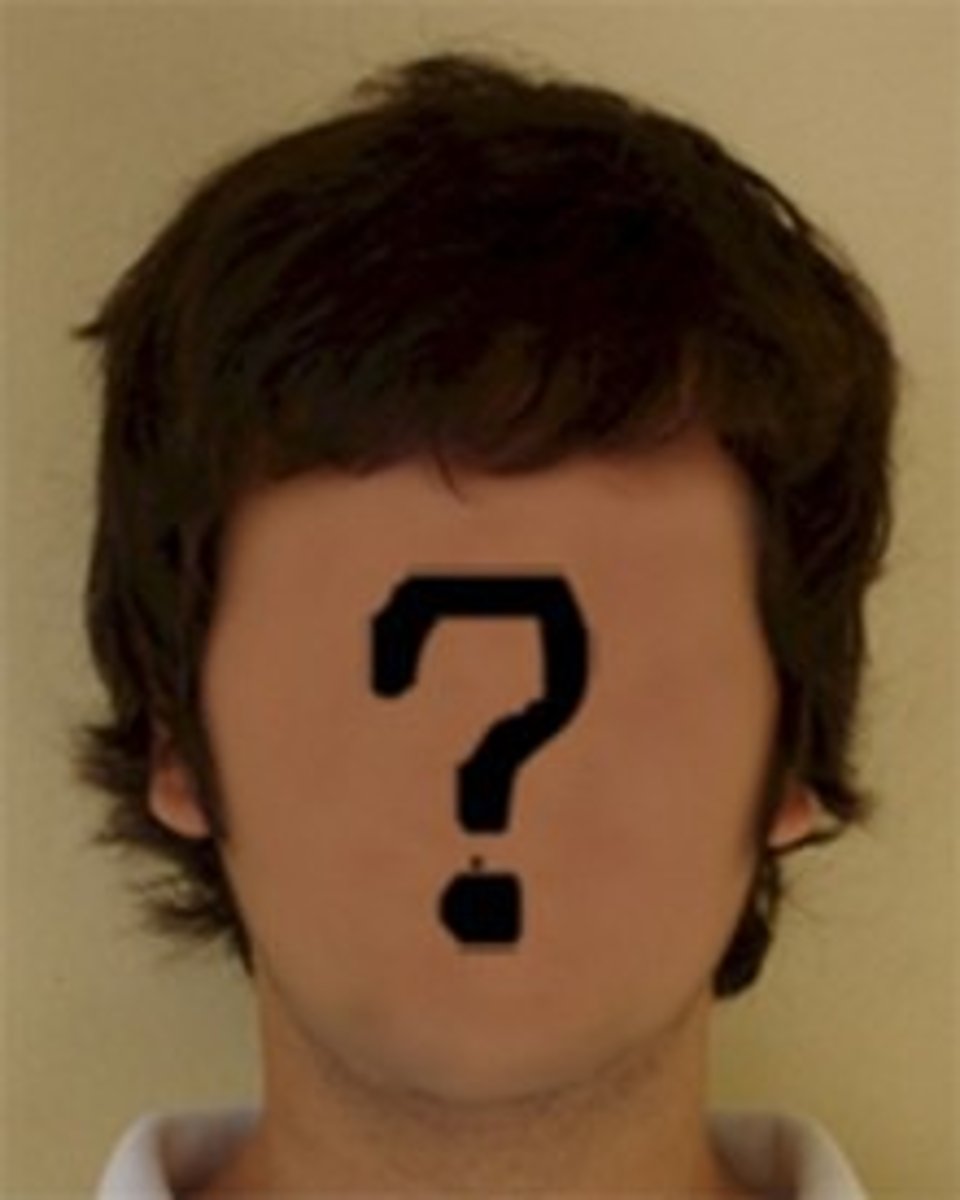
Blind sight
a phenomenon where a person with damage to their primary visual cortex can unconsciously respond to visual stimuli
Phantom limb syndrome
Sensation of pain or presence in a missing limb.